RAMEN MADE EASY

FIND THE BEST CHOCOLATE right here
As part of EAT’s 15th Anniversary celebrations we are giving away a lunch for two. Go to page 39 for contest details and to enter.
JANUARY | FEBRUARY l 2014 | Issue 18-01 | FREE | eatmagazine.ca ® Smart. Local. Delicious. CELEBRATING 15 YEARS OF GOOD FOOD & DRINK RESTAURANTS | RECIPES | WINES | FOOD | TRAVEL short rib & squash ramen bowl rabbit | be love | chocolate|bambudda|sugarboy |but c hers | s e n z u s h i | f idootsopmnairategev|selppacb|sre | ruos reeb
slurp
Pizza, Pasta








This








Sale










Wok into the New Year!







2 EAT MAGAZINE JANUARY | FEBRARY2014 for people who love to cook
Bro admeead V Vi ll age , V Vi ctori a 130-777 R oyal O Oak D Drive 250- 727-2110
price of $99.99 while supplies last regular 168.00!!!
durable, practical wok makes an excellent addition to your kitchen. It is versatile and has so many uses like stirfry, steaming, braising, etc. It
an
construction with riveted handles and TruClad Henckels quality stainless steel.
Registry Available Downt own 250 -383- 2121 250-59 5-0212 d 2 50-744-1177 Langfor d 2 50-474-2121 250 -746-9944 5 locations on Vancouver Island www.romeos.ca with a Romeo’s Pizza or Baked pasta warming your winter heart
has
excellent
Bridal
...and so much more!
Founder and Editor in Chief Gary Hynes
Contributing Editor Carolyn Bateman
Vancouver
Contributing Editor Julie Pegg
DRINK Editor Treve Ring


Senior Wine Writer Larry Arnold Okanagan/Whistler


Contributing Editor Claire Sear
Art Director Gary Hynes
Advertising Sales: 250-384-9042



























Food Reporters
Tofino | Ucluelet: Jen Dart, Vancouver: Anya Levykh, Okanagan-Whistler: Claire Sear, Victoria: Rebecca Baugniet | Cowichan Valley-Up Island: Kirsten Tyler
Web Reporters

Van Doren Chan, Colin Hynes, Jeannette Montgomery, Courtney Schwegel, Morgan K. Sterns, Jay Whiteley
Contributors Larry Arnold, Joseph Blake, Michelle Bouffard, Jennifer Danter, Pam Durkin, Gillie Easdon, Jeremy Ferguson, Colin Hynes, Anya Levykh, Sherri Martin, Elizabeth Monk, Michaela Morris, Simon Nattrass, Elizabeth Nyland, Julie Pegg, Treve Ring, Claire Sear, Dona Sturmanis, Adem Tepedelen, Michael Tourigny, Sylvia Weinstock, Rebecca Wellman.
Publisher Pacific Island Gourmet | EAT ® is a registered trademark.


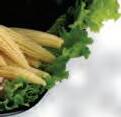
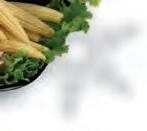






















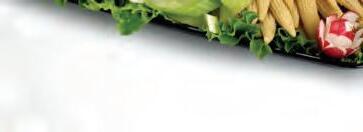


















Advertising: 250.384.9042, editor@eatmagazine.ca


Mailing address: Box 5225, Victoria, BC, V8R 6N4 Tel: 250.384.9042




















































Email: editor@eatmagazine.ca Website: eatmagazine.ca


Since 1998 | EAT Magazine is published six times each year. No part of this publication may be reproduced without the written consent of the publisher. Although every effort is taken to ensure accuracy, Pacific Island Gourmet Publishing cannot be held responsible for any errors or omissions that may occur. All opinions expressed in the articles are those of the writers and not necessarily those of the publisher. Pacific Island Gourmet reserves the right to refuse any advertisement. All rights reserved.
Cover photography by Michael Tourigny

EAT is delivered to over 300 pick-up locations in BC including Victoria & Vancouver, Vancouver Island.



content
Facebook/EatMagazine
twitter.com/EatMagazine
away away away just just a a click Customer Care 1.800.667.8280 • thriftyfoods.com Perfect for any occasion, Thrifty Foods in-store party platter specialists offer you an incredible selection of delectable deli, bakery, seafood and sushi platters for pick up or delivery. View our selection of delicious entertaining options at thriftyfoods.com. Try our online Reserve & Pickup Service for party platters and gift baskets. You can place your order online, select your pickup time and you’re all set! Order by phone at: 1.800.667.8280 Please note that for online orders we require 48 hours notice and 24 hours notice for phone orders for our platters & trays. thriftyfoods.com/pickup Entertaining? We can help. reserve pickup www.eatmagazine.ca Sign-up for our Tapas newsletter Smart. Local. Delicious. Articles Concierge Desk . . . . . . .05 Food Matters . . . . . . . . . .07 Good For You . . . . . . . . .08 Epicure At Large . . . . . . .09 Wild Food . . . . . . . . . . . .10 Beer & a Bite . . . . . . . . . .11 Get Fresh . . . . . . . . . . . .13 Reporter . . . . . . . . . . . . .14 Eating Japanese . . . . . . .18 Eating Well For Less . . . .20 The Local List . . . . . . . . .26 Local Kitchen . . . . . . . . .28 Wine + Terroir . . . . . . . .30 Wine & Food Pairing . . .32 Liquid Assets . . . . . . . . . .33 VINcabulary . . . . . . . . . .34 News from around BC . .35 Travel . . . . . . . . . . . . . . .36 What the Pros Know . . . 38 left: BITTERSWEET SYMPHONY David Mincey of Preservation Foods Chocolate Project: Fine artisan chocolate with its intense, unique flavours is a rarefied art form. Pg.24
Tracey Kusiewicz
The Year That Was


With 2014 here, I find myself reflecting on what an interesting year 2013 was. Let’s recap some of the highlights, shall we?
The year of the vegetable. For the first time, a meatless dish won the top prize at a Gold Medal Plates cooking competition, proving that the veggie-forward menu is here to stay. Here’s to The Acorn (in Vancouver) for their Smoked King Mushroom dish that broke through the meat barrier.
The Brewery & The Beast, an ode to the meat-centric life, sold out both Victoria and Vancouver events in record time.
This was the year the food truck trend pulled into Victoria, and the mobile kitchen cemented its position as a viable dining out option. With three times the number of trucks applying for coveted spots at the fantastically successful Rifflandia, a juried selection process was needed to determine which ones would get spots, and Victoria hosted its first food truck festival this past summer at City Hall.
BREAD MADE WITH FRESHLY STONE-MILLED FLOUR AND ONLY CERTIFIED ORGANIC OR SUSTAINABLY GROWN LOCAL INGREDIENTS . NATURALLY LEAVENED AND BAKED TO CRUSTY

Tourism had its best year since the Great Financial Crisis of ‘08. Will this finally herald a better bottom line for our hotels and restaurants?



According for Forbes Gordon Ramsey tops celebrity chef incomes with $38 million in earnings, causing a spike in cooking school enrollments and endless envy from #2 Rachel Ray; #4 Paula Dean had other things on her mind. In other news, Jamie Oliver becomes the foodie face of Sobeys and surpasses Ramsey as the chef with the highest net worth.
BC Liquor Law changes. A cocktail of changes is being endorsed by Premier Clark: you will be able to sample and buy made-in-BC wines, beers and spirits at farmers markets; BC joins the rest of the world in allowing Happy Hours; families will be able to eat together at pubs; and cooking schools, galleries and spas will be able to apply for liquor licenses.


Here’s hoping that 2014 turns out to be as interesting. Happy New Year!
—Gary Hynes, Editor




EDITOR’S NOTE 4 EAT MAGAZINE JANUARY | FEBRUARY2014 IT’S IN OUR HANDS. HAND-CRAFTED
PERFECTION IN WOOD-FIRED BRICK OVENS. 1517 QUADRA ST. 10 DAYS $3,590 May 1, 2014 ON-4499356/4499372 | BC-34799 | QC-7002238 | Canadian owned 250.477.0131 www.merit.ca/victoria Through the kitchens and vineyards, you will explore the rich history and culinary traditions of Italy. HostedMerit Other departure dates are available, please call for more information. TUSCANY CULINARY & WINE TOUR Hosted ough vineyar Thr eexplor Italy Highlights: •Learn to cook local dishes in San Gimignano • San Gimignano and Chianti wo wine tastings: T Two our fully hosted package includes: Y Your •Return air •7 nights in •1 night in Rome at the Una 4 star hotel or similar •11 meals: lunch, ds, . Learn oronto on T direct from , Return Return air, uscany at the Relais T7 nights in 1 1 cooking class with , 8 breakfasts 11 1 welcome and 1 farewell dinner ansatrTAir oronto on alagio Villa Il P DA YS10 DA 2 | B739494/6539494-NO 131.07740.25 iv/ /v ac.itrem.www • •Explore the famous Chianti region •our half-day guided tours in Florence F and San Gimignano Pisa, • 2 wine tastings in Chianti and in San Gimignano •Luxury coach tr •All taxes and gr n oaidana8 | C322007-C9 | Q9743-C2 | B aiortc htO elp and Explore Lucca,, our ansportation Luxury atuities All denwn o re aseat dreutra dep er erh mforn ie mor for mor cesa * CDN$ pp dbl occ. Victoria av Single supplements may be ailable at time of booking for av additional cost. ,bleaailv a .onitam Add-on from axes included. T Taxes
CONCIERGE
By Rebecca Baugniet
January
WINTER MARKET (Vancouver, BC)
Held every Saturday, from 10am -2pm, at the Nat Bailey Stadium. Once again, you can also bring your food scraps from home to recycle at the Food Scraps Drop Spot, sponsored by Recycling Alternative and Vancouver Farmers Markets. A donation of $2 per drop is appreciated. (eatlocal.org)
12th DINE OUT VANCOUVER FESTIVAL (Vancouver)
Celebrate the eleventh anniversary of Canada’s largest restaurant festival. From Jan 17- Feb 2, eat your way through 17 days of culinary events. Hundreds of restaurants will be offering three-course prix-fixe dinners. (BC VQA wine pairings available at additional cost). Restaurant menus will be revealed and reservations open on January 6. (www.dineoutvancouver.com)

SUN PEAKS WINTER OKANAGAN WINE FESTIVAL (Okanagan)
Set in the magnificent alpine setting of Sun Peaks Resort, the annual Winter Okanagan Wine Festival is one of a kind. While the vines are snoozing through the winter, the Okanagan winemakers are hard at work. Well, okay – they get a break from time to time. And they want you to visit them. Jan 11- 19. (thewinefestivals.com)
WINTER SALADS AND BRAISED MEATS CLASS (Victoria)
Keeping a healthy diet through winter can be a challenge…unless you have taken this class. This class, offered by chef Michael Williams at Cook Culture, will focus on great winter salads and dressings that can be made in batches ahead of time as well as simple and delicious slow cooked meats which can be made the day before or on the weekend. Jan 20, 6-9pm. $85. (cookculture.com)
TASTE BC 2013 (Vancouver)
Taste BC is an experience of BC’s finest wine, beer and spirits accompanied by tasty fare from some of Vancouver’s best local restaurants. With excellent food and drinks, attractions include live music, door prizes, and a silent auction that rivals any other. All Taste BC’s proceeds benefit one of the province’s most vital medical institutions, the BC Children’s Hospital. Jan. 21, 4.30-7.30 pm. Tickets $49.99. (tastebc.wordpress.com)
9th ANNUAL VICTORIA WHISKY FESTIVAL (Victoria)
Once again, the Hotel Grand Pacific is hosting the popular four-day Whisky celebration. Events include the Second Golden Age of Bourbon Masterclass with Matt Jones, the Distillers Dinner, masterclasses and tastings. Jan. 16-19. (victoriawhiskyfestival.com)
OREGON TRUFFLE FESTIVAL (Oregon, USA)
Created to celebrate the magnificent Oregon truffles as they reach the peak of ripeness in their native soil, it is the first festival of its kind in North America, dedicated to sharing the experience of the chefs, foragers and fans of Oregon's wild truffles, from their hidden source in the forest to their glory on the table. Jan 24-26. Read about EAT’s vist last year at EATMagazine.ca (oregontrufflefestival.com)
VANCOUVER GLUTEN-FREE EXPO
The annual Vancouver Gluten Free Expo has seen unprecedented growth since the first event was held in 2012. For the 2014 event, held on Jan 25 - 26, the expo will be held at the PNE Forum. This year’s Vancouver Gluten Free Expo includes over 60 vendors and promises educational and entertaining speakers to round out the day. Nutritionists, registered dieticians and media personalities like Kathy Smart and Desiree Nielsen will be on site giving cooking demonstrations, and offering invaluable advice and tips for living the gluten-free lifestyle. (www.glutenfreeexpo.ca/bc/vancouver)
WARM WINTER SOUPS AT THE LONDON CHEF (Victoria, BC)
There is simply nothing better than hearty soup in the winter. Short cold winter days require comfort food that warms the body and soul, and soup really fits the bill. Often ignored as a filling meal option, soup can be simple and economical in your household this winter. In this class you will look at soup from the beginning including how you can reinvent your leftovers into flavorful soups, the basics of stock making, and the final product – warm winter soups. Jan 25, 1-3pm. $65. (www.thelondonchef.com)
5 www.eatmagazine.ca JANUARY | FEBRARY2014
CONT’D TOP OF THE NEXT PAGE
February
SEEDY SATURDAYS ON VANCOUVER ISLAND (Qualicum Beach and Victoria)
These events are the premier networking and educational event for gardeners of all abilities! Feb 1 at the Qualicum Beach Civic Centre, from 10am – 3.30pm (Qualicum Beach, BC). Feb 15 at the Victoria Conference Centre, from 10am – 4 pm (Victoria, BC) (seeds.ca)
VICTORIA FILM FESTIVAL (Victoria)
The 20th Annual VFF will take place Feb. 7-16. This festival always includes a good selection of food flicks, and we can’t wait to see what’s on the menu this year. Watch the website for emerging event details. (victoriafilmfestival.com)

BIGLEAF MAPLE SYRUP FESTIVAL (Duncan)
Visitors are invited to participate in mini-workshops facilitated by experienced maple syrup producers, including tapping demonstrations, presentations, and displays. This year's event features cooking with local maple syrup and maple foods will be available. The festival features a maple syrup competition with judging by celebrity chefs from Vancouver Island. The evaporator will be running all day so visitors can savour the warm maple aroma of sap and see how syrup is made. Feb 1, 10am – 4.30pm at the BC Discovery Centre in Duncan. (bcforestmuseum.com)
COOK WITH BILL JONES - VENUS ON THE HALF SHELL - ISLAND SHELLFISH (Duncan)
Winter is the time that our shellfish is at their peak, cool clean waters, lots of nutrients and the best flavour of the year. Shellfish are wild harvested and cultivated on our coasts. Shellfish farms are among the most sustainable forms of aquaculture and a key form of food production from our local waters. Learn about this fascinating subject and feast on a wide array of delicious shellfish recipes. Includes all materials and products, includes a meal prepared in class. $100 per person. Feb 22, noon - 5:00 pm. (deerholme.com)
PACIFIC RIM
COLLEGE PRESENTS FOOD LEGENDS IN VICTORIA (Victoria)
Dr. William Davis, MD, author of Wheat Belly, will be offering a Gluten-Based workshop for health students and medical practitioners Feb 23, 9am-5pm. Joel Salatin, featured in Food Inc. and The Omnivore’s Dilemma, will be offering an inspirational workshop on feasible solutions for food sustainability, Mar 23, 9am-5pm. Registration is limited. Visit the website for more information. (pacificrimcollege.ca)
DINE AROUND AND STAY IN TOWN (Victoria)
Tourism Victoria and the BC Restaurant and Food Services Association’s 10th Annual Dine Around and Stay in Town will take place from Feb. 20- Mar. 9. Participating restaurants will offer three-course menus for $20, $30, $40 CND per person and are all paired with BC VQA wine suggestions. This year select restaurants will once again offer celiacfriendly menus. (tourismvictoria.com/dine)
GLUTEN-FREE HEALTH AND WELLNESS FESTIVAL (VICTORIA)
Events include the Dinner with Dr. William Davis, author of The Wheat Belly at the new Be Love restaurant on Feb 21. Feb 22, the full-day event will be hosted at the Victoria Conference Center. Vendors will share great food, beverages and cosmetics to sample and buy as well as educate and create community awareness around gluten intolerance. (glutenfreehealthandwellnessfestival.ca)
upcoming


TUSCANY CULINARY & WINE TOUR
Through the kitchens and vineyards – you will explore the rich history and traditions of Italy. Discover the towns and the countryside of this richly picturesque and culinary provocative region of Italy on this unique hosted tour. Spend seven nights in Tuscany near Florence and explore the charming historic towns of Siena and Pisa. Learn to cook local dishes and explore the Chianti area, famous for hilltop towns and fine wines. Then head to Rome. A feast for all your senses. Depart May 1, 2014. 1.866.341.1771 (meritvacations.com)
CORRECTIONS:
• In Eating Well For Less, Nov/Dec 2013 Cafe Mela. It was incorrectly reported that Nar Restaurant in Oak Bay had clased. Nar is under new ownership and is open.
• In the Penna & Co. Gift Guide advertisement in the Nov/Dec 2013 issue the Rice Cube is distributed by Danica not Metrokane.
6 EAT MAGAZINE JANUARY | FEBRUARY2014
FOOD MATTERS By Julie Pegg
Asian Noodles



Dine at the top of the local food chain.
A humble marriage of starch and water or starch and eggs, Asian noodles come skinny, fat, tangled, twisted, nested or ribbon-like and fresh or dried, delicate or firm, translucent or opaque. These Asian cuisine staples can be made from wheat, buckwheat, white or brown rice flours, or corn, sweet potato or mung bean starches.
I’ll admit I’m no Asian noodle expert. I just randomly pop into one of the oodles of noodle haunts that line Hastings and Kingsway, or those clustered about Denman and Robson. Just one slurp of chewy house-made (hopefully) udon or ramen in a steaming bowl of pork broth warms me right to the toes. The best have a rich, creamy consistency due to slowly simmered pork bones and collagen and are highlighted with star anise, seaweed, ginger and scallions.
Vietnamese pho has the same warming effect. Crunchy bean sprouts, tart lime and fragrant Thai basil meet tender brisket, pungent broth and soft noodles. (I am very happy to eat pho for breakfast.)
I like a good won-ton noodle soup too. And then there is the occasional guilty pleasure of those five-for-a buck brands of instant ramen doctored up with soy sauce, ginger and a glop of peanut butter.
An Asian colleague who really knows his noodles (we were talking ramen) asked me if I had ever eaten butter ramen (I hadn’t). Northern Japan’s severe winters, he told me, demand a good and hearty ramen. The region’s plump noodles bathe in a dense miso broth. Sprouts and other toppings are stir-fried. The dish is further pumped up with dabs of butter. File that one away for a really miserable day.
Another co-worker and noodle nut (the bunch at Kits Wine are insatiable foodies) goes for tsukemen, which, as he puts it, “is a kind of broken-down ramen.” The noodles are larger than traditional ramen, slightly undercooked to give them a firm texture and served chilled. You dip them into a super-concentrated broth studded with Japanese barbecue pork. I had read about tsukemen in the first issue of Lucky Peach, the hipster quarterly print journal spearheaded by Momofuko guru and award-winning chef David Chang. Tsukemen has leapt to the head of my must-try list.
Number 42 on the menu of this same noodle nut’s favourite pho joint is fried vermicelli squares onto which is piled a mess of grilled pork, grilled shrimp paste on sugar cane, spring roll, pickled daikon and carrot. Garnished with cilantro, basil and cucumber, it’s another must-try.
Currently topping my noodle chart is laksa, whose roots are in Malaysia and Singapore. Every laksa I try varies from the previous one, but nearly all waver around a base of curry and coconut milk “gravy.” One, though, was a revelation—rice sticks softened in sharp stock devoid of curry, and spiked with galangal, lemongrass, lots of tamarind, cucumber and a fiery chili or two. Immediately before serving, sliced chilled chicken breast and prawns were added. Hot and cold, sweet and sour, crunch and soft hit the tongue with a crazy sensation that is difficult to describe—earthy, chewy, salty and sensuous—the epitome of umami—that elusive but marvellous fifth element of taste. This style of laksa comes from the peninsular state of Penang in Malaysia and relies on sour fish stock. I hear Penang locals dive into laksa when temperature and humidity hit the roof. But I’m “cool” with it any time.
VICTORIA HOSPITALITY AWARDS
Have you recently received exceptional service? Do you consistently see an employee provide exceptional service to their customers? Please take a moment to fill out the online nomination form and recognize these outstanding individuals. Congratulations to Jay Stefanis – Inn at Laurel Point, the September winner. To nominate someone visit victoriahospitalityawards.com/nominate
The Pacific Restaurant and Loung aurant with our seasonal menu o sourced, fresh ingr ed, ingredients. Enjo to its delightfully fresh name.
ant Lounge is pleased to entice y l menu o ering the v l very best of locally edients. Enjoy a restaurant tha aurant that lives up esh name.


For reservations call 250.380. or visit hotelgrandpacific.com



Supporting local has never been so easy... just look for the crest!

The following Island restaurants are proudly serving micro roasted coffees by Oughtred daily:






www.eatmagazine.ca JANUARY | FEBRARY2014 7
ON DAMP, CHILLY DAYS OR WHEN SNIFFLES HIT, JULIE PEGG’S GO-TO SUSTENANCE IS THE COMFORT OF ASIAN NOODLES.
Member of Preferreferred Hotels® & Res
Resorts
om e you y es up
®
380.4458
E
By Pam Durkin

The Imposters


SOME FOODS MASQUERADE AS HEALTH FOOD. HERE ARE FOUR OF THE WORST.






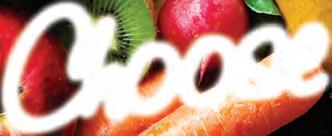




Every January, millions of people worldwide make food-related New Year’s resolutions.Some begin fad diets, while the majority simply vow to optimize their nutrition by choosing only health-enhancing foods. Unfortunately, the food industry doesn’t always make the latter choice an easy one. Food labels can be confusing and misleading, and many foods that appear healthy are actually what I like to call “healthfood imposters.” In an effort to help you fuel your body with the healthiest choices, I’ve listed four of the worst imposters below.
Multi-grain Breads
The label “multi-grain” on bread conjures up an image of a loaf teeming with nutrient-dense, whole-grain goodness. Sadly, that image is often a false one. A recent study conducted by the Harvard School of Public Health found that the majority of breads carrying labels such as “multi-grain” are anything but whole-grain. So what IS in these fresh-baked imposters? The researchers found most of these breads contained significant amounts of refined white flour—touted on the ingredient list as “unbleached wheat flour” or simply “wheat flour.” The food industry gets away with this because terms like “multi-grain” are not strictly regulated—manufacturers can use them at their discretion. Not surprisingly, three-quarters of the multi-grain breads I sourced locally listed “wheat flour”—a.k.a. refined white flour—as their second or third ingredient. Scrutinizing ingredient lists is the only way to avoid this problem. If it doesn’t say 100 percent whole-wheat or whole grain—leave it on the shelf. Alternatively, simply purchase one of the following true whole-grain multi’s I sourced locally: Irene’s 7 Grain, Bond Bond’s 95/5, Market Store’s Flax Rounds, Bubby Rose’s Peasant Seed, Origins Gluten-Free Sourdough Multi.
Veggie Chips
Though their veggie moniker conveys health, these salty snacks are no more nutritious than their potato cousins. Neither type of chip offers much in the way of nutritional value, and both are high in fat and calories. In fact, if you compare the nutritional information for both Terra Exotic Veggie Chips and Lay’s Classic Potato Chips, their data is almost identical. What’s more, sometimes products labelled as veggie chips do not actually contain any veggies! Manufacturers simply add colouring to potato or corn flour. For your health’s sake, next time you need a salty snack, nix this imposter and opt for lightly salted organic popcorn instead—your body will thank you.
Flavoured Milk Alternatives
Vanilla rice milk, chocolate almond milk—these flavoured milk alternatives tout themselves as being “heart-healthy” or “calcium-rich,” but are they really a nutritious choice? Not exactly. The “natural flavourings” added to these beverages can include any number of chemical additives, as their true origin does not have to be listed by manufacturers. Even more worrisome is the sugar content of these faux milks. One cup of vanilla rice milk contains 15-16 grams of sugar—that’s four teaspoons of added sugar. Even worse, the chocolate varieties of these bevvies contain, on average, 20-24 grams of sugar per cup—that’s a whopping five-to-six added teaspoons of sugar in each serving! Health experts recommend adult women limit their daily consumption of added sugar to 20 grams. So what is a lactose-intolerant foodie to do? The healthiest choice is to buy the plain, unsweetened varieties of these milk alternatives and, if necessary, doctor them up at home with a pinch of stevia or honey or natural flavourings such as vanilla extract or organic cocoa.
Fat-free Dressing
Although many health and weight-conscious consumers are convinced otherwise, opting for fat-free salad dressing is a bad nutritional decision. Many of the powerhouse vitamins in your salad greens—most notably vitamins A, D, E and K—are fat soluble, meaning they need to be consumed along with fat for your body to absorb them. In addition, several disease-fighting antioxidants, like the carotenoids in carrots, require the presence of fat for proper absorption. If that doesn’t convince you to nix fat-free dressing, consider this—it’s often loaded with decidedly unhealthy ingredients like caramel colouring, artificial flavours and toxic preservatives like disodium EDTA. The take-home message—pass the olive oil! E
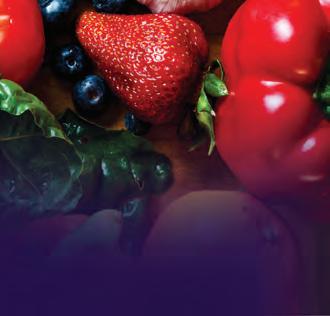
8 EAT MAGAZINE JANUARY | FEBRUARY2014
GOOD FOR YOU
By Jeremy Ferguson
A Fine Pickle
New York City’s first electric sign, installed in 1900 over the intersection of Fifth Avenue and 23rd Street, was a 40-foot-high green pickle. The perpetrator of this fairly homely business was one H.J. Heinz. Or was it civilization getting around to honouring an old trouper on humanity’s table?
The pickle has been around longer than the Bible, ever since we discovered that food could be preserved with an endowment of acid, either vinegar or brine, encouraging elite bacteria to produce lactic acid.
Almost anything can be pickled, a gift to any society whose growing season is truncated by a cantankerous climate. In much of our country, without pickles, the Hundred-Mile Diet might depend on popsicles.
If you operated a fast-food takeout in ancient times, it might have been McPickle. Chinese slave labourers on the Great Wall sustained themselves on cabbage pickled in wine. The Romans pickled olives so adroitly, they (the pickles, not the Romans) were found perfectly preserved in the ruins of Pompeii.
The term “pickle” arrived in the 14th century, a mispronunciation of a fish pickler’s name, Beukelz.

Just as well: William Shakespeare himself introduced “in a pickle” in The Tempest, his character Alonso asking, “How cam’st thou in this pickle?” “How cam’st thou in this beukelz?” might have left audiences rolling in the aisles.
If you think the pickle is as simple as the acid-and-garlic strike of a kosher dill, look again. The pickle has legs: The Chinese and Japanese can think of nothing finer to garnish their breakfasts. Pickled ginger is one of the great sensations of the Japanese kitchen. A while ago, in China’s Yunnan Province, I was treated to pickled pine needles
Koreans take kimchi—usually cabbage or radish pungently pickled with garlic, chilies, fish sauce and ginger in earthenware jars—religiously. Mothers guard their kimchi recipes as family heirlooms. Restaurants are made or broken by their kimchi, not critics. Seoul food trumpets kimchiburgers and kimchidogs. Kimchi elicits belches worthy of Dolby Sound.
Spices used for pickling range from fennel to, most delightfully, chili peppers. The familiar item Scott Joplin enshrined in his ragtime tune “Dill Pickles” was a cucumber salted and pickled with dill, dill seed, garlic, chilies, cloves and mustard seed. Experts claim its crrrunch should be audible at 10 paces.
But when it comes to ultimate pickles, I refer you to Mother India’s Kitchen and its 4,000 years of trial and error. Only on the mystic subcontinent do you find such dizzying variety. I like this best in the south, a realm illuminated by the green fire of tea plantations, where pepper plants weave around sandalwood trees and cardamom and coffee perfume the air.
Not even the humblest Indian meal would be complete without pickles, and what a selection: bitter gourds with garlic and tamarind, dried mangos with vinegar and sesame oil, chilies sauced in lemon, and a sprawling range of berries and nuts. Each differs according to its masala, the spice mix, some mild, some sweet, some sour and some hot enough to set off the smoke detectors in Hell.
They roar across the stations of the palate, bringing tears of pleasure to the eyes. My wife’s Indian lemon pickle can rip the gloom from the sky and turn a winter nightmare into summer bliss.

It doesn’t always work: Let me tell you about the Toronto wine connoisseur whose senses are so finely attuned, he can sniff out a hint of plum or kumquat in a thimble of wine halfway across the room. One evening he came for Indian dinner. Although the fare was tame enough to allow for respectable wine, the condiment bowl was subversively loaded with pickled chilies.
Our guest’s bloodhound nose picked up on it. He sampled a chili and, ignoring my warnings about spontaneous human combustion, woofed down the lot. A dish for kings, he announced. And royal it was: He spent the next three days on the throne.

9 www.eatmagazine.ca JANUARY | FEBRARY2014
THE HUMBLE PICKLE IS OLDER THAN THE BIBLE AND IN MANY CUTURES IS A RELIGION IN ITSELF.
EPICURE AT LARGE
Sun- Thurs 11:00am - 11:00pm Fri- Sat 11:00 am - midnight BRITISH FARE CRAFT BEER LOCALLY SOURCED 1250 Wharf Street, Victoria, BC Call 250.385.3474 Drop in theguildfreehouse.cominfo@theguildfreehouse.com E
WILD FOOD By Simon Nattrass
Rabbit Food
By this point in the winter season, eating wild means you’ve been enjoying the preserved fruits of fall for a month or two. With sweet berries lost to the frost and fresh greens still months away, winter is the perfect time to seek out game meats, and this season rabbit is at the top of my list.
Countless rabbits have wound up overcooked and improperly seasoned, leading many to believe that the tender, delicately flavoured meat is by nature gamey and tough. In reality, whether it’s hunted, trapped or purchased from a local farm or butcher, this staple of leaner times has traditionally delighted many a rural gastronome throughout the colder months.
Another common misconception is that only the finest chefs can properly prepare rabbit, while the country kitchen is doomed to produce only the tough and sour fare mentioned above. In fact, many classic rabbit dishes require minimal preparation, although the work of butchering depends on the condition your rabbit is in when it lands on the kitchen counter.
If you’ve bought your rabbit from a local farmer or butcher, many recipes simply require that you halve or quarter the carcass or separate the legs, saddle (back portion), shoulders and ribs. A freshly caught rabbit will need to be dressed—meaning skinned, gutted and the head and feet removed. The kidneys, liver and heart can be saved and eaten, but the gall bladder—a dark brown sack the size of a bean—must be removed from the liver or it will spoil the meat. Butchered rabbit will often include the kidneys, left attached near the joint of the hind leg. Remove these, but keep them aside for later use.
If the recipe calls for it, a dressed rabbit can be deboned using a method similar to fresh chicken. For perfect results, use a sharp knife and make shallow slices along the bone without puncturing the meat, and avoid shattering bones or you’ll be picking the shards out of your dinner. The ribs and neck can be deboned but offer very little meat. Try stewing these portions in wine, vinegar and spices for a traditional German hasenpfeffer (a traditional stew).
Cook your rabbit on low heat, avoid adding intense flavours, and you’ll have perfect results every time. For an additional wild touch, season with fresh juniper or serve with tart mountain ash jelly.
At Victoria’s Restaurant Matisse, Chef Anthony

Hodda is the imagination behind the restaurant’s ever-changing rabbit dish. In this issue of EAT, Hodda shares his recipe for stuffed and roasted rabbit leg and saddle, available at eatmagazine.ca. The delicate flavours of fennel, savoury and thyme are supported by a dash of brandy, Dijon and garlic, making this bratwurst-stuffed rabbit in beer sauce the perfect dish to liven up a cold evening. For a unique pairing, Hodda recommends a shandy of one part craft ginger ale to four parts Hermann’s Dark Lager, a perennial offering from Vancouver Island Brewery.
This season marks the second release of Driftwood Brewery’s Bird of Prey Flanders Red, a beer that simply begs to be paired with rabbit. More or less unheard of on the hop-obsessed coast, the “sour beer” style offers a sweet-and-sour blend of cherry, apple, oaken vanilla and mid-range malt with a subtle hop character. If your dish won’t take added sourness, try Driftwood’s Farmhand Saison, Crooked Coast Altbier or a Down Easy Pale Ale from Hoyne Brewing. All are balanced, ambercoloured brews with an approachable earthiness. If you’re still looking for that hop kick but don’t want to overpower your rabbit, try the milder Devil’s Dream IPA from Hoyne.
Nothing can compare to freshly caught rabbit simply spiced and roasted with care, but, as always, remember to take wild foods with care and respect for future generations of both gourmets and rabbits.
For Anthony Hodda’s recipe for Stuffed and Roasted Rabbit Leg & Saddle visit EatMagazine.ca

10 EAT MAGAZINE JANUARY | FEBRUARY2014
THIS DELICATELY FLAVOURED MEAT HAS TRADITIONALLY DELIGHTED MANY A RURAL GASTRONOME THROUGHOUT THE COLDER MONTHS.
Rebecca Wellman
E
left: Chef Anthony Hodda from Restaurant Matisse. right: Stuffed and Roasted Rabbit Leg and Saddle
A Beer and a Bite
By Colin Hynes

The Beer: Verhaeghe “Duchesse De Bourgogne” (Belgium)

This Sour Beer is a top-fermented Flanders, reddishbrown ale matured in oak casks. It is has a warm mouth feel with fruity flavours of tart cherry, grape, apple cider vinegar and brandy. Enjoyed gracefully sipped rather than chugged.
6.2% ABV, www.brouwerijverhaeghe.be
The Bite:






Raclette






Our version of raclette had small yukon gold potatoes par-boiled then fried (skin on) in bacon drippings from the morning breakfast. After frying, the potatoes are covered with Raclette cheese and put under the broiler to melt. We served it with a sprinkle of sea salt and tiny pickles called cornichons
Carnivore Meats
6-7103 W. Saanich Rd., Brentwood Bay |

The Conclusion: Beer and cheese is a match made in heaven. Like a crisp white wine, sour beer works well with intense, full-fat foods. In this dish the earthiness of cheese played nicely against the tart, berry notes of the beer. A memorable winter match-up. Think after dinner instead of a sweet. Perfect for a get together with friends, or to share on a cold, night.

The Saanich Peninsula—once home to the iconic Orr’s Family Butcher—can rejoice again at the arrival of Carnivore Meats, a new butcher shop recently opened by owner Ian MacDonald in the former Brentwood Bay location. MacDonald has a refreshing vision for the bright and welcoming store featuring banks of sparkling fridges: the meats his butchers carefully cut are primarily sourced locally from the island or at least from within the province. After finding he was eating less and less meat because of the potential risk and lack of flavour, he came to realize that everyone would benefit from central access to a variety of healthy meats without added hormones or antibiotics. MacDonald has worked hard to forge important relationships with farmers such as Quist Farms for their pork and beef, which is grass-fed and finished, ensuring optimum flavour and reduced risk from bacterial contamination associated with large batch or rendered product. The shop is also offering Island Farms free-range and free-run chicken from the Comox Valley. While the shop also offers rabbit, lamb, Cornish hen, duck and venison along with free-range turkey, Carnivore is not a boutique butcher. When they purchase locally, they buy the whole animal, keeping prices comparable to lesser quality product and benefitting the farmer too. This ensures that Carnivore Meats has great cuts to use in its gluten- and filler-free sausage selection and can offer exceptional pricing on ground meats.
 BY KIRSTEN TYLER
BY KIRSTEN TYLER
Craving kale? Jonesing for juice? If you’re going to eat more power foods, it’s good to get some powerful help: meet the high-e ciency Hurom slow juicer and the versatile Vita-Mix blender. They’ll make sure you get the most out of whole food smoothies, sauces, soups and juices.




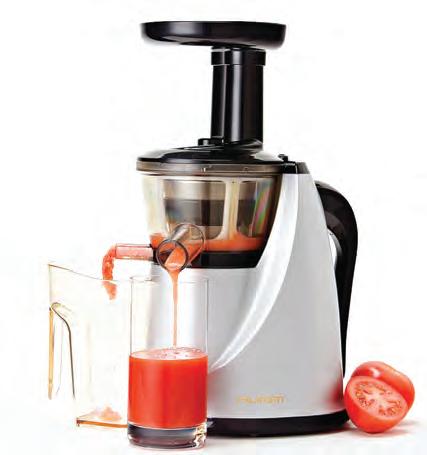
11 www.eatmagazine.ca JANUARY | FEBRUARY2014 1317 Blanshard St. - The Atrium Building / cookculture.com / twitter @cookculture / 250-590-8161
POWER CLEANING sou trium cook t. - The A 1317 Blanshard S ,esuc sa,ieshtoo sm d sm oof fo e yrueskalml’ ye ey . Th r r. edn el leb j w w o slmoruH y y H cienc e-high eogdtoosg’t, i sd dsoo r f fo ewop r j o g f fo niseno?Jel a g k ka niv vi arC culture / 250-590-8161 com / twitter @cook esicu j nd nd asp e lohfwtoutosoemhtteu g o e y yo xi ix M-at i V elit sa er ersa vhet nd t a er j e ht tee: m pl lp el h uf fu rew we oepmotse e rotmaoegtnioegr’u o f y yo ? Ieciu e
Colin Hynes
Kirsten Tyler
carnivoreandmore.com
ON OUR RADAR
By Dona Surmanis
February is Apple Month The whole beast
Hank Markgraf has two jobs—one as a Kelowna apple grower and another as head horticulturist/field service manager at B.C. Tree Fruits, the provincial cooperative that markets orchard produce for its 500 grower members.
Markgraf’s 20-acre apple orchard, H & S Productions, is located in East Kelowna. “I’ve been doing this my whole life,” he says. “My parents bought this farm, which has been here since 1905, when East Kelowna first got water for irrigation.”
At first he was growing apples, pears and cherries, and then in 1983, Markgraf switched to apples exclusively. H & S grows varieties such as Gala, McIntosh, Red, Golden, Fuji, Spartan and Braeburn.
The B.C. apple growing season runs from the last week of August until the end of October as different varieties ripen at different times.
The most popular apple varieties, according to Markgraf, are Royal Gala, Ambrosia, Honeycrisp, Pink Lady and classic McIntosh. They originate from around the world. Royal Gala, for example, is a deliberate cross-breed from New Zealand, as is Honeycrisp from Minnesota. Ambrosia is what Markgraff terms a “chance” variety from Cawston, B.C., as is Pink Lady from Australia. This means they may have been created by natural cross pollination between two different varieties.
Although most of the current B.C. apple market is in western Canada (80-85 percent), the fruit is also shipped to the U.S. (5 percent), and the rest goes to Mexico, India, Southeast Asia, Iceland, England and Russia, he says.
“The majority of B.C. apples are for the fresh market,” says Chris Pollock, marketing manager for B.C. Tree Fruits.
According to Pollock, while there are 500 grower members of B.C. Tree Fruits, there are 800 growers in B.C. Annually, members produce 2.5 million 42-pound boxes of apples a year.
“Washington State is our main competitor,” he says. “They produce 120 million boxes a year.”Apple pickers are hired locally, as well as from Quebec, Mexico and Australia.
While Pollock’s job is to market the orchard fruit of B.C. Tree Fruits members, Markgraf’s job as field service manager at
the co-operative is to advise member growers on the best fruit to grow and the best way to do it. He obtained his degree in horticulture from Washington State University so he could do this job. “I love farming,” he says simply.
Apple-growing methods and varieties have improved dramatically in the past decades. The old apple varieties could take up to ten years to produce, while the new ones take three.
One can see the difference in Markgraf’s orchard. He points out an old apple tree in one row. The tall, rangy tree has many branches and a large trunk circumference and must be spaced quite far apart from its neighbour. He then points out new varieties in another row, which are smaller, have thinner trunks and are planted closer together using post-andwire support. The new ones have maximum fruit yield for their small size. More efficient cultivation methods also add a more profitable bonus for growers.
Extended Life for Apples
B.C. Tree Fruits has four storage/packing facilities in the Okanagan: Winfield, Oliver, Osoyoos and Kelowna. At the Winfield apple facility, one building houses controlled atmosphere storage, in which oxygen and other gases, as well as temperature and humidity, are regulated. “Basically we put the apples to sleep,” says Pollock.
Packing takes place in a building across the street. One device uses photography to size and grade apples, which are then sorted into different water-filled chutes before they are sent to bins for storage. Afterwards, they are hand-boxed or automatically bagged for shipping. To find out more about Apple Month visit www.bctree.com and applemonth.com
Chef Thomas Haas, proprietor of Thomas Haas
Chocolates & Patisserie in North Vancouver, loves incorporating B.C. apples into his desserts. Apples, he says, benefit from a slow and gentle baking or cooking process. “Tart Granny Smith apples are excellent when paired with caramel, like in a tarte tatin. Ambrosia and Braeburn are excellent for a delicate galette or strudel, or even in a cake tenderly cooked in a syrup made from Riesling and hints of Calvados and vanilla.”
READ MORE: BC Chefs talk about their favourite BC apples and what to cook with them. Visit eatmagazine.ca/chefs-talk-favourite-bc-apples

12 EAT MAGAZINE JANUARY | FEBRUARY2014
-E
Beauteous Broccoli
THE CROWN JEWEL OF THE CABBAGE FAMILY

I grew broccoli for the first time last summer, and it was a fascinating experience. I bought eight small, spindly seedlings and, following instructions in my gardening books, planted them two feet apart, although this seemed excessive. It was not. Their beautiful blue leaves grew larger every day until these sturdy behemoths filled eight square feet of the garden bed. Pretty little compact heads began forming in the centre of each plant. When each crown was fully grown, I harvested it by cutting its stem six inches below the head with a sharp knife. The plants kept on producing: side shoots of medium-size florets grew at each leaf joint where I’d cut off the main stem. After I sliced off the first batch of florets from the plants, they continued to produce more florets into the fall. It was a broccoli bonanza.
Broccoli appears on every list of healing foods, and if you know what’s good for you, you’ll put it on your weekly shopping list. It is a good source of iron, and its abundance of easily absorbed vitamin C ensures the iron is well assimilated. It is an excellent source of folic acid, vitamin K, riboflavin, vitamin B6, potassium and the vitamin A precursor beta-carotene. It is also a good source of calcium and vitamin E, thiamin, magnesium and phosphorus. Its sulphur compounds have extraordinary healing properties.
Heading broccoli, which has dark green heads on robust stalks, is the most common variety. There are several other noteworthy varieties. Purple sprouting broccoli has large green leaves and small purple florets that turn green when cooked. Romanesco broccoli (aka Romanesca or Romanesco cauliflower) has ornate, spiralling, chartreusecoloured heads. This stunning vegetable has a mild, slightly sweet taste and can be eaten raw or cooked.
Broccoflower, which resembles a lime-green cauliflower, is the trademarked name for a broccoli/cauliflower hybrid that was brought to market in 1989 by a California company. It tastes similar to cauliflower when raw, and turns sweeter when it is cooked.
Asparabroc, broccoletti and broccolini are different names for a hybrid cross of broccoli and gai lan that sports tiny broccoli-like florets atop long, slender, tender stems. It resembles dark green asparagus and tastes like a combination of its progenitors*.
For maximum flavour and nutrition, sauté or stir-fry broccoli briefly, or steam it for a short time in a minimal amount of water. Try Broccoli Romani Al Prosciutto, made by sautéing garlic, prosciutto and blanched broccoli in butter and olive oil. Spicy beef and broccoli stir-fry, made with thin slices of beef, fresh gingerroot, chiles, garlic, red and green bell peppers and broccoli florets, is a classic Szechwan dish. Set aside a space in your vegetable garden and your dinner plate for this delicious super food.
*N.B.: Hybrid vegetables and fruits are a cross between two plants of the same genus or between different plant species. Peppermint, loganberry, limequat and grapefruit are examples of hybrids. Hybridization is completely unrelated to genetically modifying foods.
Creamy Broccoli Soup
Last fall, I made this wonderful soup (no dairy or gluten) using broccoli, onions, Italian parsley and garlic from my vegetable garden.
6 cups of vegetable broth
1 cup raw cashews
3 Tbsp olive oil
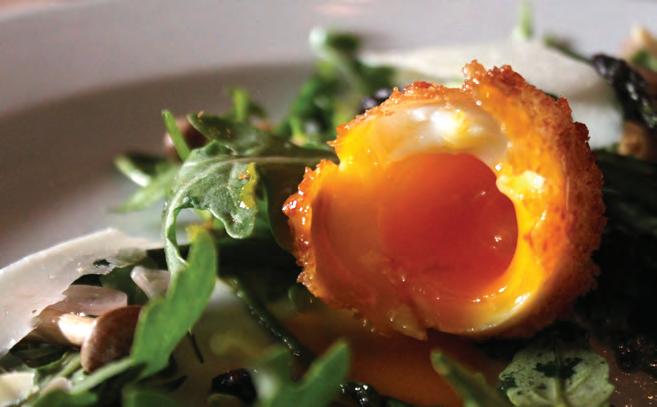
1 medium onion, finely chopped
1 carrot, finely chopped
2 cloves garlic, minced
1 medium potato, cubed
1 large head broccoli, chopped

½ cup Italian parsley
Salt and pepper to taste
½ tsp cumin
Puree cashews in 1 cup of broth. Set aside. In a large pot, sauté onions and carrots in olive oil over medium heat. Stir in garlic and potatoes and sauté. Add 5 cups of broth, broccoli, parsley and spices. Bring to a boil over high heat, then simmer, covered, for about 15 minutes. Cool and puree in small batches until smooth. Stir in cashew mixture, reheat and serve.
13 www.eatmagazine.ca JANUARY | FEBRARY2014
GET FRESH By
Sylvia Weinstock
Camille`s @ 45 Bastion Square Victoria, BC V8W 1J1 www.camillesrestaurant.com At 45 Bastion Square Globally Inspired. Local Flavour. Open Lunch & Dinner Tuesday through Saturday. E
REPORTER
Sugarboy Bakery
Sugarboy Bakery | various locations in Victoria and Sooke | 778-433-6836 | sugarboybakery.ca
Sugarboy Bakery has a mission “to do a few things, but do them really well”. Owner and founder D’Arcy Ladret has thought this way ever since he started cooking. D’Arcy started his baking career at Sooke Harbour House in his teens at a time when chefs Peter Zambri (Zambri’s), Brock Windsor (Stone Soup Inn) and Edward Tuson were cooking there. He started by doing odd jobs in the kitchen but quickly realized that cooking was something he wanted to do. He went on to cooking school at Camosun College and after graduation he returned to Sooke Harbour House where he soon eclipsed the pastry chef and took over the position.


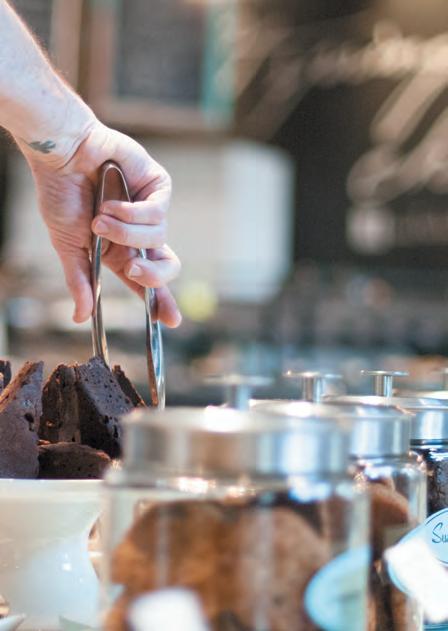

Fast forward a few years and D’Arcy had worked in a number of high end restaurants, both in Canada and the USA—places like Bearfoot Bistro (Whistler) and Lucques (West Hollywood). Lucques’ chef/owner Suzanne Goin was so impressed with Darcy’s resume that he was offered a job on the spot. To seal the deal, Goin had him try everything on the menu that day/night. D’Arcy was working at the former Lavande (now Ocean + Vine) in Santa Monica Beach Hotel when he decided to return home to Vancouver Island, first landing at Royal Roads as head pastry chef and then as Executive chef at The Gatsby Mansion.
About a year ago, D’Arcy decided that he wanted to dedicate himself to baking and pastry creation full time. But instead of working at an established bakery, or as a pastry chef at a restaurant, he opted to get his own kitchen and start his own bakery—Sugarboy Bakery was born.
Located in a commercial kitchen in Esquimalt, Sugarboy does wholesale for restaurants, bakeries, and coffee shops (the London Chef, Roast, and Sea of Bloom to name a few), as well as custom baking to order. He also delivers to offices for peckish office workers. D’Arcy is pretty much up for anything you can throw at him through his order form on his website—one order was for a cake based on the 90’s TV show, Twin Peaks. Sugarboy also does wedding cakes—traditional or otherwise—and has made hundreds and plans to make hundreds more! Also available through online orders are lavender cupcakes, cheesecakes, a tropical cake called Luau (pineapple curd and coconut frosting) and two healthy cakes—a flourless dark chocolate and the Omega chocolate cake that is wheat and dairy free.
You can also find Sugarboy and his baked goods at the Victoria Public Market Wednesdays, Saturdays, and Sundays. There, you’ll find decadent chocolate chip brownies (soft, rich, with that perfect brownie flavor), various types of cookies (D’Arcy has a wonderful oatmeal that is an homage to his mother's recipe), and a pecan bourbon tart (the best filling-pastry-nut ratio I’ve had). They also rotate through other goods. As of writing, it was shortly before the holiday season, so there were a few different brittles, rum balls, and eggnog shortbread. Surprisingly, the eggnog shortbread doesn't have any eggnog in it. D’Arcy has broken down all the different flavours of eggnog into its components to re-create the taste. This allows the cookie to stay light, instead of heavy and dense. Because of his early training at Sooke Harbour House, he is accustomed to working this way. At the Harbour House he was only permitted to use local ingredients, so for example, if you wanted a certain flavour that you couldn't grow locally (say lemon), you had to figure out how to get the same flavor profile from local ingredients.
Recently, Sugarboy has added candy-making to the line-up of baked goods. At his Public Market table, Fernet and Cola lollipops were offered, so good they sold out before lunch! There’re also caramel chews, marshmallows, and pillow mints. D’Arcy says that he will be able to offer more candy in the future, once he gets the specialized equipment needed to make it.
BY COLIN HYNES
14 EAT MAGAZINE JANUARY | FEBRUARY2014
Sugarboy’s D’Arcy Ladret in his bakery. E
Colin Hynes
Four Quarters Meats
Four Quarters Meat Production Inc. | 250-508-7654 | fourquartersmeats@gmail.com









Heron Rock Bistro

Since 2005
Supporting Live Music
Monday & Friday Evenings
All Bottles of Wine are $10 less on Mondays
Oysters and a Pint on Fridays $15
Open 7 days a week!
9am-10pm Monday to Friday 8:30am-10pm Saturday & Sunday

I spent a chilly week in November exploring meat with Geoff Pinch of Four Quarters Meat Production Inc: smoked bratwurst, liverwurst, lamb sausage, Polish ham, garlic coil, “gin and juice” salami, pepperoni, smoked duck breast, Hungarian salami, smoked chorizo, buckboard bacon. Several weeks later, I still found myself reciting the list happily in my head. It is a potent incantation for the love of meat. Most recently co-owner of The Whole Beast, Pinch has branched out, starting his own production kitchen and focussing on the wholesale trade. His culinary history is extensive. He was raised on a hobby farm near Durrance Lake on Vancouver Island with goats and goats’ milk cheese, rabbits and braised rabbit, and organic vegetables galore. His affection, respect and familiarity with local food were established early.

Pinch’s first job was managing the breakfast shift at the Brentwood Bay Smitty’s at the age of 14, where he would stay late, experimenting with food. Since then, Pinch has stayed in the industry, finding his niche curing, smoking, sausage-making and butchery in 2004 when he worked at Eastern European delicatessen JN&Z (exclusive supplier to Salt) in Vancouver. From there, it was back to the Island, working with Edward Tuson at Sooke Harbour House, and Dish Cookhouse, the popular breakfast spot in the Sidney industrial park, where he smoked, cured and dried his own meats and created his own sausages. Back at my Week o’ Meat, Pinch is handing me the bone saw and heaving a lamb carcass onto the table. “We usually use a skill saw,” he admits. I am his assistant for this visit. “Here’s the shank.” I hack into it, bone dust flying. Next we move onto a lamb sausage. After grinding up the meat under Pinch’s watchful eye, I measure out cumin, garlic, salt and paprika and grind them up too. A bit of red wine, and once the meat has chilled a spell, it’s time for the mixer. We stuff the meat into the slippery, pale, sheep’s casing. This sausage will eventually find its way to the Chef’s Table meal at 10 Acres Bistro + Bar, a delicious multi-course affair. “The lamb is not an ingredient,” says Pinch. “It is what we’re eating.” His perhaps offhand comment could well be an apt tagline for his approach, zeal and belief in his art.

The lamb sausage is exquisite, tender and flavourful. The local lamb tends to be mellower, so more accommodating and inclusive of spice. The smoked chorizo, a fat sausage on my plate for lunch two days later, is juicy and robust, the paprika and smoke divine. I can picture it in a paella or soup or on the barbecue, but I would enjoy it straight up again in a heartbeat. The liverwurst, which I have always associated with lunch, is rich and flavourful and would thrive as an appetizer. Next comes the beef pepperoni. Again, send it off in a lunch for you or your child, but the quality and taste would work anytime. The Hungarian salami, the favourite of a friend of mine, is a beauty, made in the dry classic style. The “gin and juice” salami is made with juniper and grapefruit, and the refreshing tanginess of the cure and the juice against the earthy floral notes of the juniper was fantastic. I have heard rave reviews about the chicken liver parfait, blood sausage and the Cajun Andouille sausage and am eager to try them all. At the time of writing, Four Quarters Meat Production Inc. could be found at Ten Acres Restaurant and at McLennan’s Island Meat and Seafood (previously known as Island Meat and Seafood) in Cook Street Village, where Lloyd “Meat Dog” McLennan presides. Geoff's creations are available for wholesale purchase, catering companies and at specialty shops. Oh, and his sausage can also be enjoyed at Sassy’s in Brentwood Bay, at the site of the old Smitty’s where Geoff’s adventure began.
BY GILLIE EASDON
For more information, please visit Four Quarters Meat Production Inc. on Facebook or contact fourquartersmeats@gmail.com.
Sunday to ursday 8pm-10pm

50% off all Burgers and Sandwiches




with purchase of a drink
250.383.1545 heronrockbistro.ca
15 www.eatmagazine.ca JANUARY | FEBRUARY2014
E
top: A selection of cured meats including blood & tongue sausage, bacon, white pudding & capicola. right: Geoff Pinch of Four Quarters
Gary Hynes
When you hear the words “dim sum,” certain associations don’t come to mind. Words like “eclectic,” “stylish” and “innovative” seem more like terms one would apply to the latest local-sustainable eatery rather than a joint that specializes in Hong Kong and southern Chinese cuisine. Ray Loy, however, is a man who obviously has a certain amount of vision (not to mention oodles of FOH experience at places like C, Joe Fortes and Bacchus), and at Bambudda (his first ownership), located in Gastown, those words refer to both the room and the ingestibles.
Faux-lacqueur tabletops are spaced just far enough apart to allow comfort, and dried grasses in Chinatown crockery play peekaboo with gilded prints and serene watercolours. The overall ambiance, however, is that of an upscale bistro or slightly posh lounge, without the pomp and fuss. Music also plays to the easy incongruity, ranging from Nina Simone to pulsing house beat (not too loud, thankfully).
Former L’Abbatoir sous chef Scott Korzack has the EC position and Buck Friend (formerly of Maenam) mans the wood. It’s a promising team, and the result is a series of small plates and cool cocktails that speak of Asian speakeasies, dim sum carts, and tea rooms the world over. There is a solid wine and local craft brew list, but the cocktails are the real draw.
Tsui Hang (cold “tea”) comes in a teapot for and goes down much too easily. Smooth, just a bit hooched-up with salted plum-infused Dark Horse rye, Budweiser syrup, Tio Pepe, iron budda tea and Bittered Sling Moondog bitters, it’s the perfect palate refresher and ideal for sharesies.
Carrot salad is a play on delicate flavours and textural contrasts. Soy milk panna cotta make a smooth base for cooked chunks and raw curls of sweet, firm carrot, garnished with shiso leaf. Chicken skin crackling is delicate, paper thin and crunchy with a robust chicken fat flavour, nicely balanced by the salt-andpepper-crusted limes
Bison tartare is another winner, drizzled with rendered bone marrow and sided with crispy salty rice cakes that are chewy soft inside. The barbecue pork bun sliders are equally good, tossed in a red beansesame oil-pepper sauce and sided with pickled plums that give just the right amount of acidity.
If balance is the key, then Bambudda seems to be very well-adjusted, indeed.
BY ANYA LEVYKH
Earnest Ice Cream
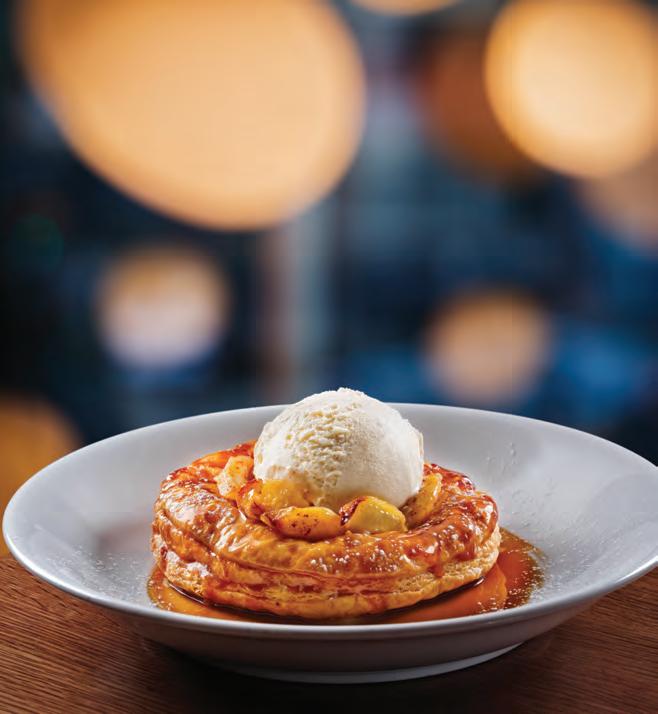
3992






The opening of a new ice cream shop may not sound like major news, but when it’s being opened by Earnest Ice Cream founders Ben Ernst and Erica Bernardi, you pay attention. The pair launched their truly earnest artisan ice cream over a year ago via a pedal-powered mobile cooler, with which they made the rounds at farmers’ markets and festivals, before eventually getting their product onto the shelves at cool indie stores like Harvest Community Foods. They’ve now joined the big leagues with the opening of their brick-and-mortar location in the up-and-coming Fraser Street neighbourhood in East Van.
The room is minimalist and bright, with white walls, octagonal tiles, and a comfortable banquet that’s long and friendly. A floor-to-ceiling cooler has take-home varieties, and the open prep/bar emphasizes the friendly and casual nature of its owners.



As for the ice cream, the story lives up to its name. Ernst and Bernardi source their fruit, dairy and seasonal flavourings from local growers (organic where possible). When they do go out of province, fair trade and sustainable are du rigueur. They also don’t use any stabilizers, and mix the minimum of air into the full-fat butter, cream and eggs that form the base of most of their ice creams. The result is a dense and flavour-intense product that screams of Old World craftsmanship and a slow food ethos. Vegans and vegetarians, fear not, for their work with next door neighbour Graze (a vegan restaurant) has resulted in some rather tasty vegan offerings as well.
That care and attention extends to the packaging as well. Reusable glass Mason jars (return them for a discount on future purchases) are hand-labelled, and ice cream sandwiches are wrapped in compostable paper.
As for the flavours, I have personally fallen in love with their salted caramel, as well as the Tahitian Vanilla, the roasted rhubarb oat crumble and the peanut butter chocolate chip, the last of which is also a vegan option. In summer, the sour cherry chocolate chip is worth any amount of time in the gym. Expect to pay round four dollars for a scoop and $11 for a pint to take-home. Matchstick coffee also makes an appearance on the menu, both in espresso and affogato form.
BY ANYA LEVYKH E
Fraser St., Vancouver | 604.428.0697 | earnesticecream.com
16 EAT MAGAZINE JANUARY | FEBRUARY2014
E New for 2014 VitIculture and wine studies Okanagan College with perfectly matched, locally sour Okanagan and learn to cr om vine to bottle, farm to table, explor Fr ture stud cul VitI ced food and wine. dinary culinary experiences eate extraor e the bounty of the ies oom/Lab at Okanagan College’ Classr Classes in the state-of-the-art BC W s Penticton campus will enhance e Sensory ine Information Centr .okanagan.bc.ca or call 250-492-4305. visit www e information and to r For mor e! And mor astingineT Sensory W ine and Food Pairing Essentials of W orkshops ine & Farm W Food, W your learning experience. egister, 26312
99 Powell St., Vancouver | 604.428.0301 | bambudda.ca Bambudda
www.cactusclubcafe.com
APPLE GALETTE flaky puff pastry, caramelized apples, tahitian vanilla ice cream, caramel sauce.
Tractor Foods
Steven and Meghan Clarke aren’t your typical parents. Former Type-As from the corporate world, the pair decided that their careers weren’t compatible with raising two young children and started looking for a new path. One of their biggest issues in their former life was finding fresh, good quality and healthy food to feed their family while on the go, and they soon realized they weren’t the only ones in this quandary.
Fast food can be had aplenty, but how much of it is actually beneficial? Thus, Tractor Foods was born on a quiet Kitsilano corner. The pair, who are first-time owners, sought out a seasoned chef and scored Ryan Mah (formerly of Joe Fortes, Chinois, Goldfish Pacific Kitchen and Wild Rice). The food is simple, focusing on soups, stews, sandwiches and the like, but the proteins are wild and sustainable, and all of the ingredients are as local and organic as possible. While the menu is not solely vegetarian or vegan, it is strongly vegetable-heavy and many dishes are, in fact, animal-free.
As for the room, it’s a bright, open, cafeteria-style space that also boasts a small 18-seat patio for the summer months. The focus is on take-out, but there are 34 seats for those who’d like to dine in, and it’s licensed, meaning some Blasted Church ($8 for six ounces) or local IPA isn’t out of the question.
I tried a few of the salads (all reasonably priced at $3.25). Grilled pears with arugula, candied walnuts, blue cheese and a lemon-champagne vinaigrette was light and refreshing. Tomato fennel soup ($6) was smooth, creamy and licked with light spice, while a veggie sandwich with kale, bell peppers, grilled zucchini, tomatoes, asiago cheese and pesto aioli on multigrain ($5 for a half-portion) was so hearty and rich that I didn’t miss the protein at all. Stews are equally satisfying, and at $8 each, make your dollars stretch far. Braised beef short rib with porcini was a thick, stand-up-your-spoon bowl served with toast points and lots of love. There are even a couple of mini-options for the kidlets, like the very moist meat loaf ($8).
It’s fast food without the stigma or “slime,” and it’s really about time.
BY ANYA LEVYKH
Chef Panisse
| 1517 Shattuck Ave. | Berkeley, California | chezpanisse.com







When my wife arranged a house exchange with a Berkeley family last summer, we immediately booked a table at world-famous Chez Panisse. Alice Waters’s seminal, 42- year-old restaurant laid the groundwork for a farm-to-table revolution while garnering critical accolades. Waters is also author of eight books, including Recipes for a Delicious Revolution. In 1996, she developed Berkeley’s acclaimed Edible Schoolyard program and is vice-president of Slow Food International.
Last March, Chez Panisse suffered a fire that closed the restaurant for four months and was news around the world. When we ate there in August, the packed downstairs dining room and upstairs café still buzzed with first-night, rebirth excitement. Waters used the fiery tragedy to fine-tune her vision, re-roof and reinforce the building, and redesign the menu. A new bussing station and slightly reconfigured seating arrangement gave the upstairs café where we dined a cozy, romantic glow that was both intimate and shared, as we enjoyed personal dining epiphanies with a collective sigh. From the mirrored wall behind our table, I watched our fellow diners swoon.
While downstairs gourmands shared a set dinner menu that changes nightly and ranges from $65$100, we chose a 2007 Navarro Pinot Noir from Anderson Valley south of Mendocino and studied the new menu. All front-of-house staff wore white dress shirts, ties and black trousers, and our server was friendly, knowledgeable and professional. His passion for the food was palpable. Another server explained how the restaurant staff helped out with much of the rebuilding, including a new, Shinto-inspired flat roof and a new front porch. It sits behind the familiar vine-entwined gate and original Chez Panisse sign under a sheltering Bunya-Bunya tree.
The upstairs café is a little more casual dining and much cheaper that the fixed price downstairs dinners. My daughter selected the evening’s $28, three-course menu du jour featuring a simple garden lettuce salad dressed with a hint of vinaigrette, hand-cut tagliatelli with meaty chanterelle mushroom ragout and fresh peas, and a dessert of strawberry sorbet, balsamic macerated fresh strawberries and a Langue du Chat biscuit.
My wife ordered the rocket salad with eggplant, mint, olives and spicy pistachios and loved the dish’s bold, fresh flavours. For her entree, she chose wood-oven-roasted Monterey squid. I enjoyed a taste of its tender, aioli-slathered flesh with Romano beans, Meyer lemon and golden beet relish.
I ordered baked goat cheese with garden lettuce that melted in my mouth with a melody of verdant freshness and warm, earthy sweetness. The robust, silky, California Pinot Noir had hints of cherry and was well-matched with tender, medium-rare cuts of braised and grilled lamb with shell-bean gratin and toasted breadcrumbs. It was simple and delicious, the essence of Waters’s food philosophy.
We enjoyed a bowl of cognac-chocolate truffle ice cream with bittersweet chocolate sauce and toasted our good fortune to share such a wonderful meal at this reborn culinary shrine.
The café accepts reservations one month ahead of the dining date. Call 1-510-598-5049.




 BY JOSEPH BLAKE
BY JOSEPH BLAKE
Perfectly placed on rich South Okanagan farmland, Tinhorn Creek overlooks the old gold mining creek that is the winery’s namesake. We are environmental stewards of 150 acres of vineyards: “Diamondback” on the Black Sage Bench, and “Tinhorn Creek” on the Golden Mile Bench. Both provide us with the fruit to craft the superb, terroir driven wine that we’re known for. Our top tier Oldfield Series represents the finest of each vintage.

E 17 www.eatmagazine.ca JANUARY | FEBRARY2014 E Perfectly placed in the South Okanagan www.tinhorn.com
MEATS www.tworiversmeats.com 604.990.5288 info@ tworiversmeats.com TWO RIVERS SPECIALTY MEATS DIRECT TO CONSUMER PROGRAM 4.990.5288 inf t s.com 60 smeaerivor.twwww o@ 4 .990.5288mosmeats.cerivortw
1903 West 4 Ave., Vancouver | 604.222.2557 | tractorfoods.com
Comfort Food Nippon-Style
VICTORIA HAS SOME EXCELLENT JAPANESE RESTAURANTS. JOSEPH BLAKE SHARES HIS FOUR FAVOURITES Photography by
Elizabeth Nyland
In 1979, chef David Nakayama moved from Tokyo to Victoria to cook at Yokohama Restaurant where, two years later, he opened Victoria’s first sushi bar. That’s where I was introduced to this traditional Japanese style, and where sushi became my personal comfort food. Nakayama moved to Oak Bay Marina Restaurant in 1996 and has operated his oneman sushi bar in a corner of the restaurant for the past 17 years.
“That was Bob Wright’s vision for the Marina,” Nakayama explained. “Bob said ‘Just make sushi.’ My passion is sushi and fishing. Bob made it very easy for me to enjoy my hobby, to fish on his boats all the way up the coast to Haida Gwaii.”
“I make more traditional-style sushi,” Nakayama continued. “In my philosophy, the rice and seaweed is most important. I tried six or seven types of rice before finding the right one. I use seaweed from Taiwan that is processed in Japan.”
right: The Lunch Special at Mutsuki-An (clockwise from top left): Sunomono salad, miso soup, inari, cucumber roll, California roll, vegetable wrap and a cream puff.

Another personal favourite, Mutsuki-An, opened in 1998 and moved from its original location near Oak Bay High School to a slightly larger space in Cadboro Bay Village last July. It’s a family business run by chef Nayumi Kushino, her daughter Anne in the kitchen and Anne’s husband working front of house.
“Our main goal is to offer home-style, high-quality traditional Japanese food,” Anne explained while preparing tamanishiki, a super-premium, short-grain rice. “It’s about a three-hour process of washing, soaking and cooking the rice. When we run out of freshly made rice or the day’s fresh fish, we close early. We also make our own blend of vinegar with salt and sugar and a secret blend of miso.”
I usually select Mutsuki-An’s $12.50 lunch special that includes four pieces of California roll, three pieces of cucumber roll, a vegetable wrap, an inari rice pocket, miso soup and soybean dumpling or gyoza. On Thursday and Friday, the special also offers nikusaga, a delicious Japanese stew. The restaurant’s $13.50 vegetarian mix is the best bargain on the dinner menu, but I also enjoy their donburo [donburi?], chirashi and nigiri sushi.
Tiny Kissako Green Tea Café on Oak Bay Avenue is a local favourite. Hiroshi Shibata and his wife Tamae Yoshizawa opened Kissako as a teahouse in 2006. In the 1960s, Shibata travelled to India and throughout the U.S. before landing a job behind the bar at New York City’s
famous Benihana Restaurant. He worked there five years and five years in Calgary before moving to Victoria and opening Futaba, where he was one of this city’s first sushi chefs. When Shibata and Yoshizawa sold Futaba and opened Kissako, they wanted to serve traditional maccha green tea and a few homemade Japanese desserts, but had to expand the menu to survive economically.
“I’ve been macrobiotic for 30 years,” Yoshizawa told me, “so we serve brown rice, tofu dishes and strictly vegetarian miso without fish stock. All of our ginger and sesame sauces are homemade. We make a bento box lunch special and a futomaki dish. Both change daily, and I still make wheat- and dairy-free, traditional Japanese sweets, homemade cheesecake and daifuku.”
I love the couple’s health-conscious, home-style cooking and the café’s cozy, peaceful warmth. I’ve never been to Japan, but I always imagine Kissako is a little bit of Japan in Oak Bay.
right: Chef Hiroshi Shibata and his wife Tamae Yoshizawa
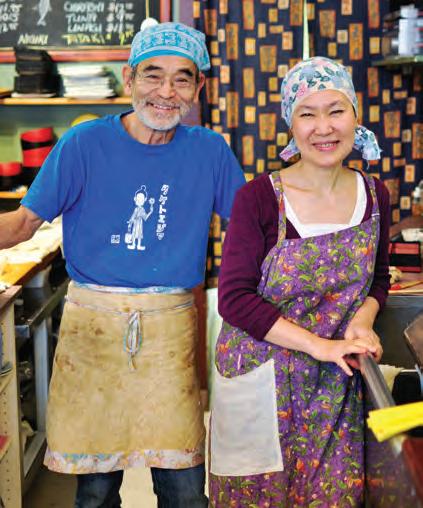
above: (Bento box lunch special at Kissako ) Clockwise from top left: brown rice, salad with ginger dressing, tuna tataki, bean roll and spring roll with fried tofu, kimpira gobo (burdock root and edamame) and creamy sesame sauce.

18 EAT MAGAZINE JANUARY | FEBRARY2014
Fukushima to work at Sen Zushi in 2007 and became manager four years ago.

“We try to mix food cultures like in Japan where pasta with a Japanese twist is very popular. The executive chef lets our three young sushi chefs play and create special dishes like Japasta with cod roe, butter and mushrooms. We always try to get fish locally and not farmed.”
When my family visited Sen Zushi recently, it was matsutake season, and the chefs were offering the pungent pine mushroom in several special dishes. Amberjack and sea bream nigiri and a spicy tuna tartar with avocado on tofu were other delicious specials, but my favourites were lotus root and prawn fritters and baked oysters with motoyaki sauce.
Victoria has a wealth of good Japanese restaurants. I highly recommend these four, wonderful, local favourites.
Sushi Bar at Oak Bay Marina Restaurant, 1327 Beach Dr., 250-598-8555
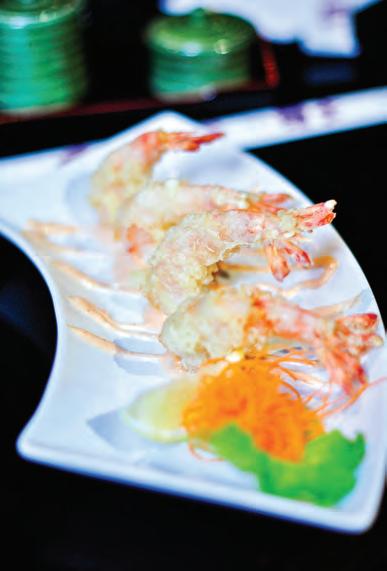





Mutsuki-An, 2056A Sinclair Rd., 250-595-0378




















Kissako Green Tea Café, 2027 Oak Bay Ave., 250-370-5195




Sen Zushi 940 Fort St., 250-385-4320

19 www.eatmagazine.ca JANUARY | FEBRUARY2014 EAT Magazine. One more reason to live and work on the Island. We build for the web, mobile phones, big screens, small screens, and paper of all kinds. Let’s get to work. Visit us online at MEDIAONE.CA
top: Sen Zushi Executive Chef Kozo Kawada right: Prawn Fritters.
Tsutomi Kondo bought Sen Zushi in 2004 and was joined by Kagawa-bred executive chef Kozo Kawada in 2005. Sen Zushi has been an eccentric, funky fixture on Fort Street since 1995, but Kondo and Kawada have created a sleek, modernized venue, training servers to be “more polite and Japanese” in the words of manager Naoko Kokubun, who moved from
E
Be Love
Be Love | 1019 Blanshard St, near Fort | 778-4337181 | beloverestaurant.ca


It is hard to convey my sense of wonder at how much effort goes into each dish at Be Love, the vegetarian restaurant brought to you by the owners of Bliss. Everything they serve is free of wheat, gluten, dairy, meat, additives and processed sugar. Nothing is hasty or careless. Take the crackers, for example. You might think, “Just crackers,” right? Well, these take up to 48 hours to make. They’re a compilation of flax, sunflower, pumpkin, sesame and chia seeds, as well as hemp hearts. The seeds are soaked so they sprout, and then the crackers are dehydrated at a low temperature for 36 to 48 hours. Take that, Ritz brand!
The hummus and olive plate for $10 features these precious crackers for dipping in a smooth, lemony hummus, alongside seductively warmed-up olives. The sweet yam crackers have a similar treatment and complexity, being created with hemp hearts, carrot, red pepper and sun-dried tomato, and are served with guacamole for $8. It feels a little strange that I’ve spent half my review talking about crackers, but really, they’re a marvel. In the actual meal category, Autumn Spring Rolls for $9 make for a colourful light lunch. An intensely green blanched collard leaf encases almond-coconut paté, cilantro, sprouts and pineapple. If you like coconut noodles, you’ll like this. At the higher-price-but-worth-it end of the menu are the enchiladas for $16. The tortilla is not so much a tortilla as a raw food crêpe of flax and tomato. It is stuffed with spiced black beans, corn, spinach and roasted squash and topped with pseudo sour cream made with cashews and roasted tomato chipotle sauce.
Drinks are a whole other menu page of juices, smoothies, sodas and hot drinks. Do try the latte with hazelnut milk. They make the milk there so it has a creamy consistency (this is no watery almond milk from a box). Children are taken care of here with a simple dish of rice or quinoa with two toppings for $8. So too are the impecunious, who can purchase the Love Bowl for whatever they can afford. The conclusion was clear for my family: we love Be Love.
*On Friday, Feb. 20, Be Love is hosting a dinner with William B. Davis, author of Wheat Belly, as part of the upcoming Victoria Gluten-Free Health and Wellness Festival. Go to www.glutenfreehealthandwellnessfestival.ca.


20 EAT MAGAZINE JANUARY | FEBRARY2014 EATING WELL FOR LESS
By Elizabeth Monk
Rebecca Wellman
top: Joe Cunliffe, Heather Cunliffe & Ayrie Cunliffe of Be Love far left: The bar at Be Love middle left: Chocolate truffles middle right: Wild mushroom fettucini
At last! A restaurant sure to make it in this previously ungainly space across from Pepper’s near UVic. Restaurants have gone here to die before; the saddest loss for me was seeing the Russian one go. But this space has had a major makeover and is now a warm space hung with Thai tapestries, bedecked with Buddhas and bustling with energy. I even had to line up briefly to get in. First order of interest for those with budgets in mind: lunch specials are at the under-$10 mark, with the exception of the seafood one. For instance, the Green Chicken Curry comes with soup of the day and two spring rolls for $9.75. The curry is a silky blend of sweet and salt and the soup I tried, Tom Kha Gai, was a coconut milk soup with a hint of spice and a ton of lemon flavour from the lemongrass. A dish that is available on both the lunch and dinner menu is the Drunken Noodles, so named because someone back in time threw these noodles together while drunk and created a classic ($9 at lunch, $12 at dinner). This dish has become embedded in my family’s taste psyche. I’m guessing what made these noodles so savoury and flavourful is the Thai favourite of Golden Mountain sauce. But the kitchen kept its lips firmly closed on the subject—top-secret recipe, apparently. A big fun factor on the appetizer menu is the Lemongrass Dressed Prawns for $9.75. These are dramatic and will awe the children. Egg noodles are wrapped around and around the prawns and then deep-fried, creating what looks like a puzzle with a prize in the centre. Or, as the male in my life said, “Like a Thai corndog.” Equally dramatic and playful was the Chicken Mango Cashew for $17 on the dinner specials menu. We were served half an iceberg lettuce, from which we ripped leaves and stuffed them with a delicious mix of ground chicken, peppers, carrots and spices. There’s a feeling of warmth and fun at this welcoming restaurant, on top of the enticing food.












 left: Chef Joodprasong Saimeenoi holding a plate of Chicken Mango Cashew. right: Sweet and Sour Chicken Cashew.
left: Chef Joodprasong Saimeenoi holding a plate of Chicken Mango Cashew. right: Sweet and Sour Chicken Cashew.
21 www.eatmagazine.ca JANUARY | FEBRARY2014
Thai Lemongrass | 3838 Cadboro Bay Rd., near Sinclair | 250-385-3838 | thailemongrass.ca
CONT’D TOP OF THE NEXT PAGE
Elizabeth Nyland
I was seduced into The King’s Deli by the glinting glass jars of walnut oil, fig spread, Okanagan fruit preserves and the ilk. My family returned for soup and a sandwich and were very pleased by how juicy and tasty our sandwiches were. Everyone thinks they can make a sandwich, but it is a true talent to make a delicious sandwich. The curried chicken sandwich for $6.45 has a sweet twist thanks to juicy bites of apricot. The chicken is freshly roasted in-house, the lettuce was crisp and the bread is from Portofino. The King’s Delight for $7.95 was one of the best paninis I’ve had in a long time. The delicious tastes of brie, capicolla, spinach and tomato are heightened by an elegant fig spread, and the textures of the panini were just right—juicy and warm on the inside, crisp outside. For some classic British fare, the King’s Deli offers a ploughman’s lunch for $8.95. The owner has the good sense to source from Jenny’s Olde Country Fare in Sooke, a great local company. The ploughman’s lunch is appropriately chunky: a chunk of dense, rich Melton Mowbray pork pie, two hunks of basic Swiss and cheddar cheese, a bun, your classic Branston pickle and, for some extra flair, three large borettane onions pickled in balsamic. This would be a useful plate to share with a small child. Junior could eat some cheese and bread, and you’d still have plenty. Daily soups are hearty and go for $3.95 with a small dinner roll. The curried yam soup was sweet and textured, and the tomato, chicken and bean was rich and meaty. For dessert, I went with one of Jenny from Sooke’s British creations, a moist, almond-based Bakewell tart, while my daughter had a lot of fun with a Portofino sweet bread called Orangesicle. The style of the place is a bit disjointed, with those elegant displays of preserves that first enticed me in and sandwiches served in red plastic baskets. The business is only three weeks old as of this writing, so there’s plenty of time to fine-tune décor, and the food is already strong out of the starting gate.

FOOD WRITER/PHOTOGRAPHER

We’re looking for someone who loves to write and can take a decent photo.



REQUIREMENTS: Lives in Victoria, professional experience with food, deep knowledge of the food scene, photography skills (has their own DSLR), ability to chase down leads, meet deadlines and work with our editors.


EXPECTATIONS: Commitment to2 posts per week. Pay: on a per post basis Apply: Send a cover letter, resume & photo samples to editor@eatmagazine.ca




22 EAT MAGAZINE JANUARY | FEBRUARY2014 The
Deli,
St. between Douglas and Blanshard
250-382-8284
King’s
773 Fort
|
left: Owner and Chef Michael King right: The King's Delight: a prosciutto, Natural Pastures Brie cheese, fig jam and spinach panini.
E
Elizabeth Nyland









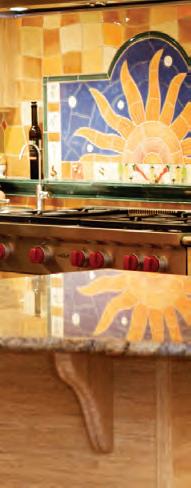





























































23 www.eatmagazine.ca JANUARY | FEBRARY2014 Every story starts with a reservation Dine Out Vancouver Festival January 17 - February 2, 2014 DINEOUTVANCOUVER.COM ™ Trademark of Tourism Vancouver, The Greater Vancouver Convention and Visitors Bureau. ® Used by Amex Bank of Canada under license from American Express. PREMIER SPONSORFESTIVAL PARTNER PRESENTED BY MEDIA PARTNERS SUPPLIER PARTNERS award-winning, innovative, island-sourced cuisine 509 fisgard street, victoria 250.590.8795 ulla.ca eet, victoria d strar509 fisg
David Mincey: one of Canada’s top chocolate experts lives for the cocoa bean

24 EAT MAGAZINE JANUARY | FEBRUARY2014
Story by Cinda Chavich
Photography by Rebecca Wellman
David Mincey stands behind the bar at Cook Culture, passing out bite-sized samples of some of the world’s most exclusive chocolate.
Like the tastings he offers here nearly every other Saturday, it’s a free event. This is remarkable in itself, but what’s even more remarkable is the breadth of artisan chocolate Mincey has amassed here in his store-withina-store—the best selection of artisan chocolate bars for sale in one place, anywhere in the country, perhaps the world.
At these informal, drop-in events, both curious and committed chocolate lovers get a chance to nibble chocolate from his carefully curated collection, some truly rare bars, some he’s recently discovered and some so scarce they come from his own chocolate “cellar” and will likely never be seen again.
“This is the Antica Dolceria, each bar made entirely by hand one at a time, by monks in Sicily. It took me years to get 12 bars and this is the last one,” says Mincey, proffering a taste of the rustic bar.
A nine-year-old boy, a “regular” here with his family, puts the gritty, dark sliver into his mouth and pronounces it “rich.”
This Sicilian bar, among 12 others he’s sharing today, is just one of dozens available through his Preservation Foods Chocolate Project. It’s an example of the hottest trend in the chocolate world— bean-to-bar chocolatiers who source the world’s best cocoa beans direct from growers, then roast, grind, conch and mold them into pure, dark and unique chocolate bars.
Mincey is not a chocolate maker, but he has certainly become an expert when it comes to this type of rare, artisan confection. A longtime Victoria chef— former owner of Camille’s Restaurant— with a passion for farm-to-table cooking, Mincey began his quest for the best chocolate 25 years ago.

“As a chef, I knew exactly where my meat and eggs and vegetables were coming from, but my suppliers couldn’t tell me anything about the chocolate we were buying,” he says. “I became a little obsessed about where to get good chocolate.”
And so the work of researching, collecting, tasting, sharing and finally selling craft chocolate began. Today, Mincey says there are about 100 good bean-to-bar makers in the world, and he imports bars from about 60 of them to sell in Victoria. This craft chocolate goes beyond single plantation, organic or even Fair Trade parameters. It’s made in small batches, from beans with sustainable and ethical provenance.
“People want to know where they can get better chocolate,” Mincey says, “and when they try some of these bean-to-bar products, it’s a revelation. It’s just fantastic chocolate.”
I’ve had my share of fine, single-origin bars, chocolate from famous chocolatiers like Michel Cluizel or Valrhona. But these small makers are the garagistes of the chocolate world, breaking rules and making bars that stand out with intense, unique flavours and distinctive labels.
It’s a new generation of chocolate makers, mainly in the U.S. and Canada, with nearcult followings—company’s like the Mast Brothers in Brooklyn, Dandelion and Dick Taylor from California and Patric Chocolate in Missouri.
Canada has a handful of pioneering bean-to-bar makers too, from Toronto’s Soma, arguably the country’s top maker, to Vancouver’s new East Van Roasters, a social enterprise that’s creating delicious bars while helping disadvantaged women get off the streets. All are available from Mincey’s chocolate display at Cook Culture or from its online shop. At the other end of the spectrum are Nestlé, Lindt & Sprüngli, and Kraft—huge confection companies that now own upscale brands from Ghirardelli and Scharffen Berger to Green & Black’s—as well as Barry Callebaut, the couverture wholesaler to the world. While the largest of them do buy beans to make their bulk chocolate, some even paying Fair Trade premiums, most of the world’s chocolate-bar makers are mere “melters”—buying and blending this industrial chocolate to create their own branded chocolate bars, truffles, filled chocolates and other creations.
The sad reality is that much of this bulk chocolate is sourced from cocoa plantations in Ghana and Ivory Coast where child labour and slavery are rampant.
But consumers, especially those committed to sustainable and ethical eating like Mincey, want better. While it’s a little more difficult to make farm-to-table connections halfway around the world, that’s exactly what these bean-to-bar makers do. Many have direct relationships with cacao farmers or their grower co-ops, paying premium prices and helping producers improve the quality of their beans, to realize even better profits.
Marisa and Kent Goodwin have been importing organic, Fair Trade chocolate to make their Organic Fair bars in Cobble Hill for several years. And recently they acquired the small-scale roasting and grinding equipment they need to make their bars from scratch.
“We used to blend Fair Trade chocolate from Dominican Republic and Peru,” says Marisa, “but now we buy our beans direct from growers.”
Cont’d on pg 27
25 www.eatmagazine.ca JANUARY | FEBRARY2014
David Mincey of Preservation Foods Chocolate Project
THE LOCAL LIST
EAT’s where to find it guide
EAT Magazine is available thanks to the support of our advertisers. Please support them whenever you can
LITTLE CHEESE SHOP
At Little Cheese Shop we are proud to offer many local as well as imported cheeses. We also feature local products to pair with your snacks, platters and gift boxes.
1034 Fort Street, Victoria, BC (250) 388-5810 thelittlecheeseshop.ca
SPECIALTY FOOD SHOPS RESTAURANTS

THE MINT

Stop in for a casual bite at street level and experience our cozy Lunch restaurant, or join us downstairs for dinner, drinks and our unique take on South Asian cuisine.

1414 Douglas St., Victoria, BC (250) 386-6468 themintvictoria.com
VICTORIA PUBLIC MARKET
ISLAND SPICE TRADE






























Vancouver Island Salt Co's Andrew Shepherd brings the best flavours from BC and around the world to his new Public Market shop. Island Spice Trade, Victoria's home for salt and spice.
Victoria Public Market at the Hudson (250) 882-4489 Islandspicetrade.ca
LA COCINA DE MAMA OLI
Traditional Mexican home cooking. Hand made tortillas and salsa. Come and taste taquitos, tortas, mole, fish tacos, refried beans and breakfast.

Victoria Public Market at the Hudson (778) 433-8348
RAVENSTONE FARM ARTISAN MEATS
We produce a wide range of hand crafted products using locally raised meats (most from our farm) and superior seasonings, herbs and produce. No fillers are used in our sausages and most are gluten-free.
Victoria Public Market at the Hudson www.ravenstonefarm.com logan@ravenstonefarm.com
(W)250-738-0480



(C)250-217-3939

ROAST

















ROAST is a casual, quick-serve rotisserie centered to-go sandwich shop. Our meat centric menu offers roasted meats to either buy by the slice. Or stay for a visit and eat a yummy sandwich. Delicious food using only the best ingredients.
Victoria Public Market at the Hudson info@roastcarvery.com www.roastcarvery.com
phone: 778 433 6639
VICTORIA PUBLIC MARKET
At the Victoria Public Market at the Hudson local farmers, fishers, butchers, bakers, cheese-makers, preservers, florists and restaurateurs gather together under one roof. It’s the freshest, tastiest place to be on Vancouver Island!
Victoria Public Market at the Hudson
Open Every Day Except Monday
(250) 884-8552
victoriapublicmarket.com



WHISK KITCHEN STORE
Whisk is the colour-filled kitchen store that I've dreamed of creating in the Victoria Public Market. Come and see our beautiful collection of Fiestaware, linens and Juliainspired gadget wall.
Victoria Public Market at the Hudson 778 433 9184
Silk Road’s Royal BC Museum Tea
Silk Road, Victoria’s premiere tea company, launched its exclusive new blend at the Royal BC Museum herbarium last month. Proceeds from the sale of this exclusive tea will be donated to the Royal BC Museum Foundation to support the work of the museum and archives.
Silk Road’s Royal BC Museum Tea is a unique organic black tea blend inspired by—and created with—premium botanicals from British Columbia, including native species.
“Tea is about a sharing of knowledge and culture,” says Daniela Cubelic, Tea Master and Founder of Silk Road. “I remember coming to the Royal BC Museum in elementary school. I was fascinated by an interpretive ethnobotany demonstration that included whipped soapberries and the experience influenced my interest in tea and culture.”
Nootka Rose and Black Raspberry are two native plants that infuse this unique blend of India, China and Ceylon teas. Its native and cultivated BC ingredients include: black raspberry, thimbleberry, cranberry, blueberry, salmon berry, salal berry and Nootka rosehips.
Royal BC Museum Tea is available for purchase at the Royal Museum Shop, at both Silk Road locations and online at silkroadteastore.com.
26 EAT MAGAZINE JANUARY | FEBRUARY2014
at the Victoria Public Market at the Hudson
David Mincey - Cont’d from pg 25






Making chocolate bars is never simple, but Goodwin says the bean-to-bar business is particularly complex.
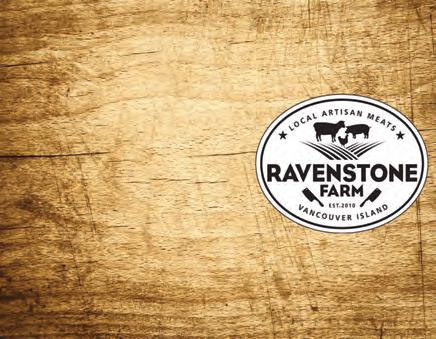
“We roast, crack, winnow, grind, conch and then we have to temper and mold the chocolate,” she says. “Chocolate is very picky—it’s not simple to work with chocolate.” She points to the terroir and unique flavours of the world’s cacao as her inspiration. Like craft beer and gourmet coffee, craft chocolate is booming, but Goodwin says it won’t grow as quickly because “it’s just so much more work to make chocolate.”
Mincey agrees, saying there’s both technical skill and art involved in making great chocolate. Not all of the beanto-bar products he tastes make the grade. In five years he expects the number of bean-to-bar makers worldwide to increase, but only to about 200 premium shops.
The 80 percent Sicilian bar we are sharing today is one of the world’s oldest craft chocolates, still ground on a millstone by hand, just as Italian monks made the first chocolate from Aztec beans delivered by Cortez in the early 16th century. Others on the tasting table have less history but are equally rare—a bar of 70% Nicaraguan chocolate from Hummingbird, a new maker in Ottawa; a Madagascar bar made by Raaka in upstate New York with flavours of blackberries and port; a Belizean bar tasting of raisins and figs from Tocoti; and the Zotter 90%, an intense, smoky bar made from beans sourced at the El Ceibo Co-op in Bolivia.
Like a fine wine tasting, Mincey has arranged the chocolate from mild and fruity examples, to intense, earthy bars with very high levels of cacao. When I get to the 97% Venezuelan bar, created by artisan makers at Rózsavölgyi Csokoládé in Budapest, Hungary, I’ve almost hit my limit. But it’s the 100 percent Bonnat bar that literally takes my breath away: pure chocolate with no sugar to mitigate the intense tannins that dry my tongue like sandpaper.
It can be challenging stuff, but Victoria’s new chocolate connoisseurs are trying and buying these chocolate bars, even with prices ranging from $9 to $24 each. Retiree Bill Huot is a convert, educated by Mincey and happy to pay for the provenance, ethics and flavour of better bars.

“I learned how artisans make better chocolate by buying from the growers and helping them make better cacao,” says Huot who admits he rarely goes a day without chocolate.
“It’s more expensive, but for less than $20 I can taste the best chocolate in the world. You can’t say that with Scotch or wine.”
Danielle Lukovich and her two young children are avid chocolate tasters, too. Only the 100 percent bar gets a negative reaction from her three-year-old daughter.
“We’re pretty choosy about the other food we buy, and there’s really no comparison when you try this chocolate,” she says. “Our kids have pretty discerning palates.”
Which is exactly why Mincey continues his chocolate crusade.
“It’s so important to get people to understand the world of chocolate.”
27 www.eatmagazine.ca JANUARY | FEBRUARY2014 URS OF uesday - Sa Sunday VICTORIAPUBLICMARKET.COM Facebook.com Rare chocolate bars imported by Preservation Foods
get your noodle on
Craving comfort? Try a riff on ramen. Warm up with a big bowl o’noodles bathed in broth made rich and hearty from slow braised beef ribs.

Recipes and food styling by JENNIFER DANTER
Photography by MICHAEL TOURIGNY
Art Direction by GARY HYNES
28 LOCAL KITCHEN
Recipe on page 39
Short Rib & Squash Ramen Bowl
boozy dessert
Whisky-Anise Pudding Bowls

This is like cool and soothing version of a hot toddy crossed with butterscotch pudding. Choose a lighthearted whisky (I adore bourbon) that won’t overwhelm the flavour. Finish with a pinch of sea salt too.
21/2 cups homogenized milk or table cream
4 star anise pods
¼ cup butter
1 cup packed dark brown sugar
Generous pinches of sea salt
3 Tbsp cornstarch
2 large eggs + 1 egg yolk, lightly beaten
2 Tbsp whisky
1 tsp vanilla extract
Whipped cream (optional)
Fresh mint or Thai basil(optional)
In a saucepan, gently warm milk with star anise. Do not bring to a boil. Remove from heat and let stand for 15 min, then refrigerate until cool. The longer it steeps, the stronger the licorice flavour. Strain milk and save. Discard star anise.
Whisky is a type of distilled alcoholic beverage made from fermented grain mash. Different grains are used for different varieties, including barley, malted barley, rye, malted rye, wheat, buckwheat and corn. Wikipedia
Melt butter in a medium saucepan. Stir in sugar and salt. Remove from heat. In a bowl, whisk ¼ cup milk with cornstarch until completely dissolved. Whisk in eggs.
Gradually whisk remaining milk into butter-sugar mixture in saucepan. Then whisk in cornstarch mixture.
Return saucepan to heat and just bring to a boil, over medium-high heat, whisking often. This may take about 5 to 7 minutes. Then reduce heat to low and whisk constantly until pudding is thick, about 2 more minutes.
Remove from heat and stir in the whisky and vanilla. Pour into a large bowl or several small bowls for individual servings. Refrigerate until well chilled. Serve with whipped cream. Garnish with mint, if you wish.
THERE’S always SOMETHING BREWING AT SILK ROAD





Looking for tips on tea & food pairing or how to brew the perfect pot of tea? Need some fabulous tea mocktail or cocktail recipes? Visit our new online magazine at silkroadtea.com - your ultimate resource for tea recipe ideas.


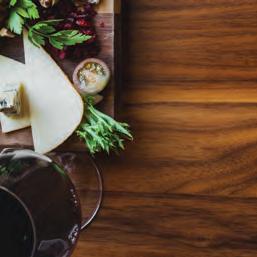

 By Michelle Bouffard and Michaela Morris
By Michelle Bouffard and Michaela Morris
Loire Terroir
Dotted with Cinderella castles, cool caves, quaint villages and country inns that seem lost in time, the Loire Valley oozes a natural charm. The long meandering river invites you to explore the idyllic countryside at a leisurely pace, maybe even by bicycle. And there are plenty of options along the way where you can enjoy the local food and wine.
Loire is France’s longest river. From its source in the chilly centre of France to where it bends westwards and flows into the Atlantic, it covers a lot of ground. As it approaches the ocean, the climate becomes less extreme. It is this diversity of climate and mixture of different soil types that allows the region to plant different grape varieties. Well-known Sauvignon Blanc to the lesser-known Chenin Blanc and the more obscure Melon de Bourgogne are the region’s most important whites. For the reds, Cabernet Franc reigns supreme, but Pinot Noir and Gamay also have a comfortable home here. The style of wine is equally varied: sparkling to still white, red and rosé as well as offdry, medium-sweet and fully sweet.
Rarely seen on the label, the grapes are hidden behind the appellations. Sauvignon Blanc is concentrated in the upper reaches of the Loire Valley. Predominantly made still and dry, Loire Sauvignon is the definition of racy. The expression is less overtly pungent and more minerally than its New Zealand counterparts, but the variety retains its signature herbal citrus notes. It reaches its apogee in the appellations of Sancerre and Pouilly-Fumé. Less expensive and straightforward examples show up under Sauvignon de Touraine. These wines are completely at ease with white fish dressed up in the Loire’s famous beurre blanc sauce, but the most famous pairing is with goat cheese.
Pouligny-Saint-Pierre, Crottin de Chavignol and Selles-sur-Cher are salty tangy cheeses and a match made in heaven with Sauvignon Blanc. A number of great producers grace our shelves here in BC. Look out for Henri Bourgeois, Vacheron and Alphonse Mellot. For the very top try those from Pascal Cotat and Didier Dagueneau.

En route to the Atlantic, as you travel through the region of Touraine, Chenin Blanc is the main attraction for whites. And what a grape! Nowhere else in the world demonstrates the potential and versatility of this variety. It is articulated in both sparkling and still as well as a whole range of sweetness from bone dry to fully sweet. Look for sec (dry), demi-sec (medium-sweet) and moelleux (fully sweet) on the label to give you an idea of the style. A range of flavours is equally possible from orchard fruit like quince and apple to tropical fruit such as pineapple and even floral notes. Add some years of age and Chenin becomes richer, rounder and more complex, developing intriguing notes of honey and mushroom.
The appellations of Vouvray, Savennières, Montlouis and Anjou all feature Chenin Blanc. Vouvray showcases the grape in all its various expressions. Here Domaine Huet is the reference. These were some of the first wines we stashed away in our cellar. We were students at the time, and even $20 seemed expensive, but the rewards we’ve had speak to the age-worthy potential of Chenin. The well-priced examples from Domaines Vaugondy and Rimbault are also favourites. From Montlouis, Jacky Blot’s wine excites us. Recently available in B.C., the wines are similar to Vouvray and we can’t get enough of them. His wines have the body to handle richer mushroom cream sauce as well as roasted chicken, veal or pork. More austere and in the category of “intellectual wines,” Savennières offers a dry expression but with extraordinary concentration and precision. The wines need a few years to demonstrate the true complexity of which they’re capable.
When it comes to sparklers, Chenin is a common ingredient in Crémant de Loire and the grape behind Vouvray Mousseux. Bursting with apple and earthy notes, they offer great value for money. We love to enjoy them with sushi takeout or salmon gravlax. If you have a sweet tooth, seek out the succulent yet vibrant wines from Quarts de Chaumes and Bonnezeaux. The natural high acidity of Chenin Blanc keeps the wine refreshing. The classic match? Tarte tatin and lots of it.
30 EAT MAGAZINE JANUARY | FEBRUARY2014
TERROIR
1624 Government St. Victoria Chinatown silkroadtea.com
SilkRoadVictoria @silkroadtea
The lean, fine-boned, high-acid wines from the Loire have been vastly underappreciated.
Just beside the Atlantic, the appellation of Muscadet is far better known. Here the grape Melon de Bourgogne crafts a delicate white that is low in alcohol (never more than 12 percent). Those marked “sur lie” have been aged on the dead yeast cells giving this light neutral white a touch more body and flavour as well as a slight prickle. The best have an appetizing salty tang, which works like a charm with fresh oysters. Domaine de l’Ecu, which Marquis carries, and Château de la Gravelle are two great names to seek.
The Loire produces some very interesting red wines that deserve more attention. Their medium body, pronounced earthy notes and fairly high acid level make them “unfashionable,” however. Deemed as “food wine,” they need the right pairing to truly shine. This is why an increasing number of restaurants are offering them by the glass. Look for the elegant-sounding names of Saumur-Champigny, Anjou Villages, Chinon and Bourgueil. The underdog Cabernet Franc grape is the star behind these regions. There is a lot to love about this grape, starting with its fragrant pencil shaving, leather and herbal qualities. While the tannins are relatively low, they can still be firm. Slightly chilled, they are brilliant with steak tartare and pâtés.
For a light red, go for Sancerre rouge. Mostly known for Sauvignon Blanc, Sancerre produces some delicate, fine-boned reds made from Pinot Noir. Sweetbreads or grilled salmon is a great pairing. Vincent Delaporte crafts a silky and elegant version.
A tipple of rosé might be just what you need during these long rainy winter days. The Loire Valley produces lots of different styles from dry to off-dry. Cabernet Franc, Gamay, Malbec and Pinot are the most important players. The dry style made by Vacheron and Pascal Cotat are brilliant.
The lean, fine-boned and high-acid wines from the Loire have been grossly underappreciated. One needs to remember that these wines’ greatest attributes is their ability to pair with food. They are the perfect foil for rustic and hearty bistro fare. Luckily, you don’t need to take a trip to Paris to enjoy them. The selection in our local restaurants has been increasing steadily. Order a glass and let the sommelier guide you. It’s the best way to be introduced to these wines.
TASTING NOTES
2010 Château de la Gravelle, Muscadet Sèvre et Maine sur lie AOC $18-20 (SKU #411066) This understated beauty is light on its feet with flavours of lemon, apple blossom and a saline tang. A classic with oysters. Don’t be surprised at how quickly you finish the bottle.
2011 Domaine de Vaugondy, Vouvray Sec AOC $20-23 (SKU #721654)
Refreshing and thirst-quenching. Lemon zest, chamomile and mineral notes awaken your palate for roasted chicken.

2011 Domaine de la Taille Aux Loups, ‘Les Dix Arpents’ Montlouis sur Loire AOC $28-31 (SKU # 234849) Jacky Blot is one of the Loire’s best winemakers, crafting outstanding Chenin from old vines. A brilliant match with rillettes.
2010 Henri Bourgeois, ‘La Côte des Monts Damnés’ Sancerre AOC $37-41 (SKU # 227934)




Focused and precise. Grassy notes with gooseberry, white grapefruit, mineral and wet stone. Serve this racy number with a fine goat cheese.
2010 Serge Dagueneau et Filles, ‘Clos de Chaudoux’ Pouilly-Fumé AOC $40-45 (SKU #690891) Lemon and smoke with a thrilling flinty quality on the palate that lingers. An elegant match with halibut served in a grapefruit beurre blanc sauce.
2008 Domaine des Baumard, ‘Clos de Papillon’ Savennières AOC $45-50 (SKU # 204693)



Complex notes of quince, honey and red apple peel with a touch of pineapple and hay. Slightly nutty on the palate with tingling acid. Has the weight to handle a chicken mushroom fricassee.
2011 Thierry Germain, Saumur-Champigny AOC $20-23 (SKU #616227)
Shows the lovely herbal side of Cabernet Franc. Lush crunchy red fruit and peppery notes. Hamburger night!
2010 Domaine Baudry, Chinon AOC $27-31 (SKU # 615047)
Reveals itself slowly. Nice core of minerality with explosive red currant, sorrel and pencil shavings on the finish. Bring on the steak tartar.
2011 Vincent Delaporte, Sancerre Rouge AOC $30-34*
Earthy and fine-boned with pure red cherry notes. The perfect foil for chicken liver.

DRINKING Guide: How to use our purchasing information.




*Asterisks denote wines that are only available at the winery or select private liquor stores. Some may be in limited quantities. All other wines are available through BC Liquor Stores. Prices may vary.


31 www.eatmagazine.ca JANUARY | FEBRUARY2014
E
WHAT TO DRINK WITH THAT By Treve Ring
Vegetarian.
OUR EXPERTS
Jessica Bryans (JB)
National Wine Buyer, The Joey Restaurant Group
Jessica’s passion for wine began almost 10 years ago with an extended stay in Tuscany. Her career in the wine industry began when she returned home, securing a job in a local wine shop and enrolling in a course with the International Sommelier Guild. Following several years with Vancouver based retail giant Everything Wine, Jessica joined The Joey Restaurant Group, where she combines her passions for wine, food and travel as the group’s National Wine Buyer for almost 30 restaurants across Canada and the US. She is also accredited by the Wine and Spirit Education Trust.
Stuart Brown (SB)
Sales Representative, Trialto Wine Group
Stuart has over 20 years of restaurant and hotel management experience while working at The Fairmont Chateau Whistler, The Hotel Grand Pacific, and The Westin Bear Mountain Golf Resort and Spa. He completed the Sommelier Diploma Program in 2006 with The International Sommelier Guild and has been teaching for The Guild since 2009. Stuart holds the title of ViceConseiller Gastronomique for the Victoria Bailliage of the Confrérie de la Chaîne des Rôtisseurs and works full time representing the wines of The Trialto Wine Group.
Rasoul Salehi (RS)
Managing Partner (the hands-on kind) of LaStella and Le Vieux Pin
Rasoul began his career in the wine industry as soon as he turned 19 and has quickly accumulated a vast knowledge and understanding of wine and the business of wine. His education includes a Bachelor with in Communications from Simon Fraser University which he completed with honours and an advanced diploma from the Wine & Spirit Education Trust (WSET). He is a recipient of a scholarship to become a“Certified Spanish Wine educator”, a program offered through the “Society of Wine Educators”. As a passionate wine collector Rasoul now has a collection of over 1000 bottles.
Rasoul’s passion and experience help lead the philosophical direction and vision of the winery. Rasoul is also focussed on sharing the wines of LaStella and Le Vieux Pin with the rest of the world as he leads the winery’s international export.
Phyllo Purse filled with brown beer and miso seasoned French lentils, atop seasonal bean ragout, deconstructed ratatouille, pipernade sauce (Graze)
JB. I think Frappato would taste great with this dish. These wines are so charming – they tend to be light, fresh and have a distinct sweetness of fruit on the palate that is hard not to love. The tomato, pepper and onion in the piperade sauce would complement the wine’s juicy fruit, adding another dimension of flavour and creating a sweet and savoury combination. The bright acidity in the Frappato will lift the other elements of this dish, like the lentils, ratatouille and bean ragout.
SB. Some earthy, slow cooked flavours bring me to the Rhône valley of France. One of the wines that reach out to me would be a serious rosé like Tavel; the Grenache, Cinsault, Syrah and Mourvèdre would contrast the richness and leave your palate ready for more. If you prefer red, a nicely aged Gigondas or Rasteau from the Cotes du Rhône made with Grenache, Syrah and Mourvèdre would be a wonderful compliment to the flavours and depth of this dish.
RS. Food and wine pairing to me is half science, half art while keeping the spirit of experimentation and having fun alive! My personal approach in pairings is trying to match the weight and textures and overall flavour profile of the dish. I feel a traditionally made Syrah from a cool climate to be a terrific partner for this dish. The oak char that the wine is aged in will complement the toasty malt and caramelized notes of the brown beer sauce and the
sweetness of the Miso. The earthy notes of the wine matches that of the lentils while the natural Syrah spice elevates the aromatic profile of this dish. Lastly and most importantly the searing acidity of cool climate Syrah will cleanse the palate and make the second bite taste as exciting as the first!
Hen of the Woods, Maitake mushrooms, Beluga lentils, soft poached egg, cipollini onions, apple butter (The Acorn)
JB. Meursault comes to mind immediately, but to make it interesting I think Savennieres would be a fun and delicious pairing. Savennieres is made from Chenin Blanc; these wines are usually dry with high acidity and ultra complex flavours like red apples, honey, mineral, florals and earthiness. This wine’s concentrated apple and honey flavours and mouth-filling texture would balance beautifully with the intensity of flavours and rich texture from the egg, onions and apple butter. The zesty acidity would cut the fat in some of the richer elements on the plate and the earthy undertones would work great with the Maitake mushrooms. If you want a sure bet, go with Meursault or oaked Chardonnay, but if you are feeling adventurous, Savennieres would be my pick!
SB. I must be stuck in France today (not a bad place to be stuck), but the wines that are reaching out to me are from there. With the richness and caramelized flavours of this dish, an aged white Burgundy would be my first stop. A couple of favourites are Meursault or Puligny-Montrachet – these can be some of the best Chardonnay in the world. They have a lovely hint of nuttiness on the finish as well as the texture, concentration, weight and complexity that would encompass all of the focal points of this dish. It’s never a mistake when you have good, white Burgundy! RS. Can you say a classically made Pinot Noir with a few years of bottle age as the perfect match? I can. Yum. An earthy dish that is delicate in flavour intensity yet rich in texture needs a well-made Pinot Noir to tango with. The telltale forest floor notes of a classic Pinot with some bottle age will make the delicate earthy notes of both the maitake mushrooms and beluga lentils come to the foreground while the sappy sweet fruit profile of this noble grape will be a great nod to the cipollino onions. The lithe and ethereal structure of Pinot Noir will not add weight to and already rich dish but rather bring it back to balance in subtle fashion, like a choir singing softly behind a great vocalist. E
32 EAT MAGAZINE JANUARY | FEBRUARY2014
WE ASK LOCAL WINE EXPERTS JESSICA BRYANS, STUART BROWN AND RASOUL SALEHI HOW THEY WOULD APPROACH PAIRING DISHES AND FLAVOURS FROM TWO OF VANCOUVER’S TOP VEGETARIAN RESTAURANTS
7 Wines to drink right now
Snoqualmie “Naked” Organic Riesling 2011, Washington $21.00-23.00
Great Riesling is been grown in the Pacific Northwest. This lovely Riesling from Washington is a case in point. It is the very essence of the grape. Organically grown grapes are fermented, a little sulfur dioxide is added to safeguard its journey and there you have it. It is like a Pas de Deux, gorgeous, ripe fruit and firm, bracing acidity. Superb concentration with enticing apricot, citrus and petrol aromas and flavours, slightly unctuous with a long, long finish. It’s all about the dance!
Truchard Vineyards Roussanne 2011, California $34.00-36.00


Roussanne is a finicky Rhone varietal. It ripens late, can be very acidic if picked too early and is susceptible to mildew, rot, wind and inexperienced winemakers. But, for the rewards it brings to the table, nobody in their right mind would grow it. However, when all the stars align, Roussanne can produce wines of incredible richness with a saline minerality that is almost beyond description. These are wines that Hugh Johnson never told you about. The Truchard is lovely with a nose redolent with pineapple, quince, apricot and vanilla aromas. Luscious and waxy but clean with firm acidity and sleek peach, citrus, mineral and honey flavours. All this and a dry finish too. Superb!
Mission Hill Five Vineyards Chardonnay 2012, Okanagan $14.00-16.00




The quality of this extraordinary Chardonnay from the south Okanagan becomes selfevident the moment you stick your nose in the glass. Could that be a ripe peach and just a minute, yes there is a little floral aspect, perhaps jasmine and a subtle citrus note under the spice rack. The fruit is excellent but there is some fancy winemaking going on here. At this price, made in BC, how can this be? I don’t know, but I am happy to say I have enjoyed several bottles and I still have a fiver in my wallet. Mediumbodied with a soft creamy texture and pronounced green apple and tropical fruit flavours, taut with a whisper of oak and a soft silky finish.
Kettle Valley Great Northern Viognier 2012, Okanagan $19.00-22.00



The immediate impression is of fruit, you really don’t have to go looking for it, rather it comes right over with a quick howdy-do and assaults your olfactory system like there is no tomorrow. My kind of Viognier, not shy and coquettish, but rather like a big girl in a tight dress, if you know what I mean. Really stands out in a crowd. The book on Viognier is hard on apricot and honey-suckle and I say yes to both, with perhaps a hint of quince, something that’s been on the ground for a day or two. Fecund might be the word I am looking for. Bob, one of the owners and winemakers of Kettle Valley tried to explain to me that Viognier is a white grape that behaves like a red and at first I didn’t know what the heck he was talking about but after a few sips I could see his point. The impression I got from the nose was altogether different from the reality of the palate. This is a hefty white with broad fruit flavours, crisp acidity, an ample splash of alcohol lurking just beneath the surface and a surprisingly dry finish that is gone before you really get a handle on the experience.
Kettle Valley Great Northern Zinfandel 2011, Okanagan $22.00-24.00





Not quite in the monster Zin category but a respectable middle weight nonetheless. Rich bramble, vanilla and black cherry flavours roll over the palate in waves, but beware, though this finely texture red may be silky smooth, at 15.6% alcohol it packs a powerful punch.
Cavit Alta Luna “Phases” 2010 Italy, $15.00-17.00

This elegant but robust blend of Merlot, Lagrein and Terodego is sourced from vineyards sites high in the Dolomite Alps in northern Italy. Rich and concentrated with layers of black cherry, boysenberry, cassis and spice flavours that explode in the glass, held in check by a cut of bracing acidity and a fine patina of silky smooth tannins.

Perrin Reserve Cotes du Rhone Rouge 2010 Rhone $18.00-20.00




The Perrin family owns Chateau Beaucastel, one of the regions greatest producers of Chateauneuf-du-Pape. They apply the same care and skill to all the wines they produce. A relatively simple nose packed with ripe, juicy fruit aromas. Cherries, yes! Red licorice, Why not! Dark berries, covers a lot of ground, so lets run with that too. On the palate the wine is delicious with easy drinking sweet fruit flavours, a splash of racy acidity, spice and a hint of oak. Really top notch quaffing with friends and lovers while just lying around passing time.

Open 7 days a week 5325 Cordova Bay Rd. 250-658-3116 Our service can best be described as “Knowledgeable, yet not pretentious……approachable, with a hint of sass!” ON THIS FARM THERE ARE SOME WINE CHICKS... at MATTICK’S FARM www.vqawineshop.ca VQA W Wine S Shop Big Reds to stay cozy with this Winter! Established 1998 170 UPPER BENCH ROAD SOUTH, PENTICTON T. 250 770 1733 WWW.UPPERBENCH.CA OUR FLAGSHIP WINE... SHIPPED RIGHT TO YOUR DOOR. W SHIP FLRUO DOO R U YO G RI DEPSHIP
LIQUID ASSETS By Larry Arnold
REACH MORE HUNGRY GASTRONOMES! Over 117,00 food & wine lovers per issue advertise with EAT in the March/April 15th Anniversary Issue enquire now 250.384.9042 / editor@eatmagazine.ca E
VINCABULARY— Learn wine, one bottle at a time By Treve Ring
Grenache
{gren-AASHE / gren-ash}
Grenache is one of the most widely planted red wine grapes planted on the globe, which would explain the vast variety of synonyms - Garnacha, Alicante, Nieddu, Cannonau, Lladoner and Uva di Spagna among them. This early budder / late ripener is a heat seeking missile. Its sturdy wood, penchant for dry, rocky soils and upright growth pattern makes it suitable for hot, arid climates and able to withstand periods of drought. The thin skinned, light flesh, sweet grape tends to make wines higher in alcohol and lighter in colour, often desirable traits in a blending partner. Pure varietal Grenache aren’t all that common; most often you’ll see it blended, as with Châteauneuf-du-Pape, for example, or GSM blends from South Australia. Red fruit notes are hallmarks – raspberry, strawberry and cherry, with a characteristic white pepper, spice and dried herb savouriness and a move towards leather and tar with age. Grenache’s versatility also makes it a feature player in rosés (Tavel, Navarra) and fortified vins doux naturels of Roussillon such as Banyuls.
FRESH
Brotte
Les Églantiers Tavel Rosé 2012
Tavel AC, Southern Rhone, France
$23-26 13.5%
Summer sweet wild strawberries, bright citrus, garrigue and fine grained spice on this bone dry rose from the S. Rhone, boned up with 10% Sryah.
EARTH
Castillo de Monséran
Old Vine Garnacha 2008
Cariñena DO, Spain
$15-18 13%

50 year old vines baking in the blasting Cariñena sun have given up dusty cherry, herbal tomato, earthy bramble notes and a fresh juicy tartness.
CINNAMON
Stag’s Hollow
Grenache 2012
Okanagan Falls, Okanagan Valley, BC
*$30-35 14.5%
Canada’s first commercial Grenache has paved the way for many more. Warm cedar spice, ripe red cherry, cranberry, strawberry jam and a huge whack of savoury and peppery spice on the bright finish. Exciting and impressive.
PEPPER
Yalumba
Bush Vine Grenache 2011

Barossa, South Australia, Australia
$25-28 14%
Big cracked spice here, with cinnamon and black pepper from start to finish, overtop of perfumed black floral, deep damson plum and a satisfying, fresh palate.
PENCIL
Argiolas Costera
Cannonau di Sardegna DOC 2010
Sardinia, Italy
$25-28 14%
90% Cannonau is assisted by 5% each Bovale Sardo and Carignano, adding local intrigue to this savoury and focused Sardinian red. Herbed anise, pencil lead, black currant, ash and peppery spice.
HEADY
M. Chapoutier
Banyuls Vins Doux Naturel 2010 Banyuls, Roussillon, France
*$26-30 for 500ml 16%
Ripe and heady raspberry and blackberry jam, lightly caramelized brown sugar, pink flowers, white pepper and an orange peel finish. Solid concentration plus freshness on this dessert wine.
DRINKing Guide: How to use our purchasing information.
*Asterisks denote wines that are only available at the winery or select private liquor stores. All other wines are available through BC Liquor Stores.

34 EAT MAGAZINE JANUARY | FEBRARY2014
The Buzz
WHO’S DOING WHAT IN VICTORIA, VANCOUVER, THE OKANAGAN, TOFINO, THE COWICHAN & NANAIMO
VICTORIA: Fans of Hank’s in Ucluelet will be pleased to hear that we now have a location in downtown Victoria. Hank’s Untraditional BBQ is located on Douglas St (in the space that briefly housed The Melt). Hank’s opened in late November and if you are wondering what “untraditional” designates, in this case it may refer to a guinea foul, mole and poblano sandwich, or a house-cured lamb bacon sandwich (both $10). Either way, it is something people are getting excited about. The menu is ever changing, with top quality ingredients - local produce and meats from Two Rivers. Beer enthusiasts will be impressed with the selection here as well. Follow @hanksondouglas on twitter to see the menu changes. The King’s Deli is the latest addition to Victoria’s Deli Row at 773 Fort St. Lunch specials include the Ploughman’s Lunch, with Melton Mobray Pork Pie (from Jenny’s Olde Country Fare in Sooke), pickled onions and Branston pickle ($7.95). Also on offer are daily soups and wraps, and supper specials such as a whole roast chicken and two salads ($12.95). (facebook.com/TheKingsDeli)
Chef Sam Chalmers has rebranded his restaurant at the corner of Broughton St and Langley St. North 48 Restaurant specializes in "Modern Diner" cuisine; the celebration and elevation of classic dishes and menu items from around the world. The concept is to take time-honoured favourites from North American Diners, Belgian Bistros, Japanese Izakayas and everywhere in between, incorporate modern techniques and premium ingredients to elevate them into approachable, modern cuisine. Everything on the North 48 menu is made in house and they hope customers will enjoy revisiting some old childhood favourites, all grown up. (northfortyeight.com)
It’s the time of year when gardeners and urban farmers start planning for the next growing season. Seedy Saturday events take place across Canada, and are organized by Seeds of Diversity – a Canadian volunteer organization that conserves the biodiversity and traditional knowledge of food crops and garden plants. Victoria’s Seedy Saturday is hosted by the James Bay Market and takes place at the Victoria Conference Centre from 10am-4pm on February 15th. The event will include chef demonstrations, speaker talks, seed exchanges, open pollinated seeds, and more. For more information, visit jamesbaymarket.com/seedysaturday The Horticulture Centre of the Pacific is offering a 4-session course called The Backyard Orchard, running on Saturday mornings Feb 22, 29, Mar 1 and 8. The course is for those serious about cultivating fruit and nuts in an urban space. The focus will be on apple, cherry, pear, plum, peach, kiwi, Carpathian walnut, butternut, hazelnut, fig, blueberry and raspberry. (hpc.ca/courses) Registration is also open for UVic’s Continuing Education course Seed Saving Your Garden, which provides an introduction to basic seed saving principles and techniques for the home gardener. Course participants will leave this class with a basic understanding of seed saving principles (isolation distances, cross-pollination, plant breeding) and techniques (how to harvest, dry, process and store seeds as well as conduct a germination test). The class will be held at a farm in Metchosin and will alternate between course lecture in the farmhouse and hands-on learning in the main greenhouse. To register, visit uvcs.uic.ca
The Victoria Public Market at the Hudson is launching a new weekly children’s program this January. Little Sprouts will be offering free arts and educational every Saturday in the Community Kitchen, the heart of the market from 12-3pm. This program is designed to encourage children and their parents to use their creativity while learning about nature, food, farming and healthy eating. Little Sprouts provides an opportunity for children to discover new foods and learn where they come from. In addition to arts and crafts Little Sprouts will offer scavenger hunts, market bingo, food science and more. (victoriapublicmarket.com) —Rebecca
Baugniet
COWICHAN VALLEY | UP ISLAND: January and February are often our darkest months on the Island - but they don't have to be. Brighten them up with visits to some of the wonderful new food experiences that have cropped up between Cowichan and the Comox Valley lately. Duncan kicks things off first with everything new at The Old Fork. Chef Scott Warnsley's menu has a comforting, southern feel with dishes such as fluffy biscuits smothered in sausage gravy, and fried chicken with waffles. In addition they offer a local wine program, Tapas nights, and black & white movie viewing. Check out their website for more details. TheOldFork.com
Owner Trien Cao formerly of Nha Trang Maki Sushi has graced Maple Bay with the new Bad Habits Cafe. She's very passionate about using the freshest products and making everything from scratch. Offering all day breakfasts and coffee from local roaster Mirizo, plus visiting-chef dinners on Friday and Saturday nights. Get full details at badhabitscafe.com
PF Perogies in Duncan might not be a new company to you but since September they've opened a retail location as well as becoming entirely gluten free. They use 22 different gluten free flours in their perogies without sacrificing any taste. In addition they offer homecrafted cabbage rolls and healthy fermented sauerkraut. Sign up for a cooking class to make your own, or purchase some to take home and cook up with a heap of fried onion, crispy bacon and sour cream! 104-460 TCH Duncan 250-701-8966
On Saturday February 1st visit BC Forest Museum in Duncan and spend a full day immersed in every-
thing to do with Bigleaf Maple Syrup. There will be maple syrup food and a cooking competition using maple syrup, judged by local chefs. Come and get sticky and sweet while savouring our local bounty! BC Forest Discovery Centre – 2892 Drinkwater Road.
Most of us already know that Nanaimo is famous for the sinful Nanaimo Bar, but fewer of us know that its now famous for the Nanaimo Bar Cocktail - not to be confused with the martini -The Corner Bistro invented and won with it at The Art of the Cocktail this past October in Victoria, for best use of local ingredients using Shelter Points' triple distilled Still Master Vodka made from 100% BC grain. Watch the link for the recipe, then enjoy it at your own risk! (youtube.com/watch?v=5SALjiJBwiE)
February 20th is the beginning of the much anticipated 6th Annual Parksville Uncorked Wine Festival weekend. The festival offers an impressive line-up of events starting with Untapped at The Beach Club Resort, Swirl at Tigh-Na- Mara, two Winemakers Dinners featuring Burrowing Owl and Road 13 plus Bubbles and Brunch on Sunday at Tigh-Na-Mara. Visit parksvilleuncorked.com for ticket and package details.
The Comox Valley is home to Red Tree Roasting, a new artisan micro coffee roasting company who is focusing on sourcing and roasting exceptional coffees from around the world. Their roasting philosophy is one of achieving balance, showcasing the extraordinary flavour range that coffee is capable of. Their coffees are a balance of origin and roast, fruit and body, bitter and sweet, floral aromatics and rich chocolate. There is a peak flavour in roasting; a sweet spot if you will, and Red Tree coffee offers a unique approach to achieve it. Try their drive through, but like all good things there's no rushing it. (redtreeroasting.com)
Follow your nose to the authentic Austrian Cappuccino Grande Cafe in downtown Courtenay for traditional European cakes and flaky pastries to go with your morning latte, or a light lunch of hearty goulash soup with fresh bread. Don't miss out on their gluten free pistachio cake, or their traditional baked cheesecake when you find it on the menu! 344 5th St Courtenay
If that's not enough to keep you busy until its time to cut the grass, make your way to Twisted Dishes formerly The Purple Onion in Comox. New owner and Chef Devon Sexton is "working hard and humble". On the wall inside you will find an impressive list of local purveyors such as Island Soda Works , Freedom Farms vegetables, and Tandice Farms' chicken to name just a few. It notes what they provide the restaurant, taking farm to table to heart and bringing it to you. (twistedishes.com)
Kirsten Tyler
TOFINO: Despite the fact it’s officially storm season in Tofino, there are a few new establishments either in the works or just about ready to open their doors here on the west coast.
Rhino Coffee House is taking over the former Breakers Café space at 430 Campbell St. Now featuring freshly made donuts, coffee drinks, and breakfast and lunch items, Rhino is the new venture of Duane Bell (formerly of the Lefevre Group), with the help of pastry chef Ron Weeks (formerly of Long Beach Lodge). At press time renovations to the space weren’t quite finished, but were scheduled to be completed in December.
Chef J. Aloain at Jamie’s Rainforest Inn describes the cuisine in their new restaurant as “traditional Canadian cuisines meets global fusion,” with Tofino-inspired ingredients. The restaurant, serving breakfast, lunch, dinner and a lounge menu, was set to open the first week of December. (tofinorainforestinn.com)
In advance of opening a new restaurant of his own with partners, chef Nick Nutting (formerly of the Pointe Restaurant at the Wickaninnish Inn) has been taking advantage of a break in his schedule to host regionally themed dinners at Darwin’s Café at the Tofino Botanical Gardens. Lucky diners have enjoyed family-style dinners featuring the cuisine of Jamaica, Italy, Spain, India, and more, all for a flat $40 price (exclusive of alcohol). Watch for more details about Chef Nutting’s new venture, Wolf in the Fog, which will occupy a portion of the Cedar Corner Building at the corner of Campbell and Fourth Sts in 2014.
A couple of local establishments have closed their doors temporarily during what is usually considered “down time” here in Tofino. Following their annual buffet lunch on Nov. 22, Sobo will be closed until Feb. 5th. Tough City Sushi Bar also closes its doors from the end of November until February. The Spotted Bear Bistro will remain open, apart from a two-week closure from Jan. 8th to 21st.
Winter brings the storm season and there’s no better seat than at the WIckaninnish Inn . Call 1.800.333.4604 or visit wickinn.com for details and packages.
Once again, the Clayoquot Oyster Festival proved to be one of Tofino’s most popular weekends. Both the Mermaid’s Ball on Friday, Nov. 13 and the Oyster Gala on Saturday, Nov. 14 were sold out events this year. At the Oyster Gala, where local restaurants offer their own oyster creations, Sobo was the winner of the People’s Choice award, and Jamie’s Rainforest Inn won the Judge’s Choice award. oystergala.com
At Shelter Restaurant this winter enjoy several specials, including $10 pizza Mondays with wine and beer specials, and $3 pints during Vancouver Canucks games. (shelterrestaurant.com). —Jen Dart
35 www.eatmagazine.ca JANUARY | FEBRARY2014
l-r top row: Lunch at Keller Estate Winery, an early California spring, cheesemaker Brian Ackerly. l-r bottom row:Cheeses at the Meet The Cheesemakers night,Louella the Milk Maid, Beet & Two Rock Goat Cheese Napoleans

Walking into the ballroom of the Sheraton Sonoma Country I’m hit by the persuasive funk of hundreds of cheeses ripened to their peak of perfection. Row upon row of chevre, washed rind, surface-ripened, blues, fresh cheeses, and hard cheeses beckon to me with their intriguing terroir. This is where California’s small batch cheesemakers have come to show-off their best cheeses and to mingle with their peers. For the next three days I’ll be living and breathing great cheese at the California Cheese Festival and, along with a couple of hundred eager aficionados, I’m ready to tour, taste, learn and discuss.
Long considered Northern California’s food epicenter, Sonoma Valley is known more for its wines, but part of the pleasure of visiting any area is discovering its small food producers. Touring the back roads and stopping at farms, wineries, and other local food artisan shops is a great way to get to know a region. Going to a food festival is an easy introduction to the local foods, and most the work will already be done for you by the curating of a selection of the best for you to try.


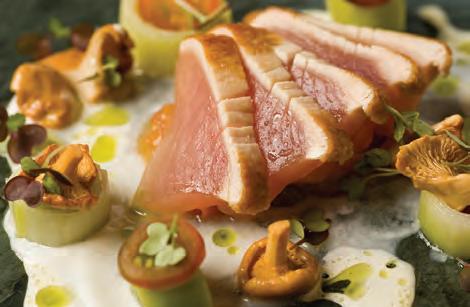

Day One: We break up into groups and board busses to meet some of Sonoma’s best cheesemakers at their farms; to go behind the scenes to see how they make their cheeses. We drive through morning fog along winding and hilly roads to the Nicasio Valley Cheese Company. Before long the warm Cali sun burns off the fog and reveals a fine day. We sample a selection of Swiss- and Italian-style cheeses, visit their Holstein cows, and don booties and netted caps to go inside the gleaming cheesemaking room. Head cheesemaker Brian Ackerly shows us how they brine the cheese and salt the curd.
Next up is a 4-course alfresco lunch at nearby Keller Estate Winery. The cooking is light and fresh and showcases the cheeses. I enjoyed the Market Beets and Peppery Green salad with a wedge of Cypress Grove Chevre Herbs de Humboldt best, but the Keller Estate Olive Oil and Almond Cake was a close second.

Meet The Cheesemakers and Their Cheese is the night’s entertainment, where we get the opportunity to explore the cheeses on our own and to talk to the makers. Some I’ve heard of, like Cypress Grove’s Humboldt Fog (a soft, creamy and tangy goat cheese with a line of ash running through the center—available in BC), others are new discoveries, like Point Reyes Farmstead’s Bay Blue (a mellow and sweet blue cheese with a salted caramel

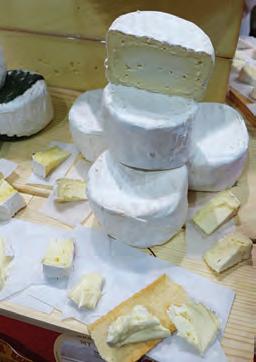

36 EAT MAGAZINE JANUARY | FEBRUARY2014
tel 1.800.333.4604
www.wickinn.com
dropping.
more about our exquisite seasonal menu featuring the finest organic, locally sourced and sustainable ingredients possible. wickinn.com/pointe-restaurant | @TasteWickInnBC
THE MOST REFINED PALATES HAVE STOOD AGAPE.
Crafted from hand carved cedar beams, framing floor to ceiling windows that offer 240-degree views of the Pacific Ocean, the setting at The Pointe Restaurant might best be described as jaw
Learn
EVEN
TRAVEL: CALIFORNIA’S ARTISAN CHEESE FESTIVAL
By Gary Hynes
finish), and Cow Girl Creamery’s Organic Red Hawk (a lush triple cream, washed rind made with wild bacteria).
Day Two: The daytime is dedicated to seminars. There are plenty of choices and they run the gamut from Cheese Making for the Extreme Hobbyist to Cheese Meets Beer, from Old World, New World Cheeses to The Secrets of Making Stretched Cheese Curd. I decide on a tasting seminar and a workshop that is hands-on. New Kids on the Block, with food writer and author Janet Fletcher, is a round table tasting session where a panel of six cheesemakers talk about their cheeses and their lives as we sample and evaluate their newest cheeses. In the afternoon Fresh Cultured Cheeses session I learn how to make tomini (a fresh cheese eaten in northern Italy as an appetizer) from Louella the Milk Maid. Louella has worked on sheep, goat, and cow farms in the USA and Europe and learned cheesemaking from some of the best. Her class was energetic, fun, and educational. After we all took turns at making the cheese, we ate the results with fresh tomatoes and basil. So good.
Nighttime brought the area’s restaurants to the hotel for The Grand Tasting, an evening of grazing. The chefs prepared dishes that used many of the cheeses I had tried throughout the weekend. I ate Duck Tart with Pennyroyal Farm’s Boont Corners

Tomme (a semi hard mountain cheese), Truffle Gnocchi with Laura Chenel’s Chevre, Huilocoche Sopes (corn masa tartlets) with Bleating Heart’s Shepherdista (raw sheep’s milk) and Deconstructed Cannoli with Bellwether Farms’ Whole Jersey Milk Ricotta, to name just a few.
Day 3: Sunday started with a cheese-inspired brunch, followed by the Artisan Cheese Tasting and Market Place, as well as various cooking demos. I opt for a little solo touring and head off north to explore the Dry Creek wine region, northwest of Healdsburg. Early evening, I catch the plane back home, bolstered by a wonderful weekend of good cheeses, good food, and a little early spring warmth.
California’s Artisan Cheese Festival, now in its 8th year, runs from March 21-23. www.artisancheesefestival.com

Sonoma Valley is just north of San Francisco, which is a mere 2-hour direct flight from Victoria or Vancouver. Or do as I did last March and fly via Seattle to the tiny Santa Rosa airport, located smack dab in middle of the valley and a quick 15 minutes away from the festival by car.
BOOK REVIEW
By Treve Ring
Decibel presents the Brewtal Truth Guide to Extreme Beers

Adem Tepedelen
“My own tastes have always run toward the extreme – be it music or craft beer.”

Victoria based journalist Adem Tepedelen has fused two of his passions, metal music and beer, to create an entirely unique new book aimed at adventurous drinkers across North America. The Brewtal Truth Guide to Extreme Beers, a spin off his Brewtal Truth beer column for Decibel magazine, takes you far beyond your average lager. Chapters like Ingredients from Hell, Tolerance-Testing IBUs and Blasphemous Brews offer tasting notes and insider details on over 100 beers, images and labels, the definitive scull & crossbones Extreme Rating system, and, naturally, the perfect metal song to accompany a pint. Tepedelen flexes his wide breadth of beer knowledge here, and it’s well worth a tour for any beer lover, no matter what’s playing on your iPod.
Paperback: 224 pages, Publisher: Lyons Press; available from brewtaltruth.blogspot.ca or on Amazon.com $15.71

37 www.eatmagazine.ca JANUARY | FEBRARY2014 Your Friendly Neighbourhood Butcher ... A Cut Above 2577 Cadboro Bay Road, VICTORIA 592-0823 Quality meats, Poultry, Cheeses, Specialty Products & Condiments 1715GovernmentStreet 250.475.6260 www.lecole.ca eat@lecole.ca Dinner5:30-11pm TuesdaytoSaturday
E
TALK By Rebecca Baugniet

What the Pros Know

WE ASKED BC CHOCOLATIERS TO TELL US THEIR MOST MEMORABLE CHOCOLATE MOMENT.
Thomas Haas, Haas Chocolates and Patisserie, Vancouver

My most memorable chocolate moment must have been when I visited the Valrhona chocolate factor y in the south of France We got a tour of the facility - you walk up stairs to a walkway with a view to the cocoa bean roasters and conches below. The intense aroma of the roasted beans and the conches travels up and hits you right there that for the first time in my life I thought this is how you must feel when you are “high”. Hard to describe but true. I was slightly dizzy, though in a good way, and hung around as long as I could!
Marisa Goodwin, Organic Fair, Cobble Hill
The first taste of our inaugural batch of bean to bar chocolate made with cacao beans from Madagascar It was a moment 5 years in the making and we were pretty thrilled with the chocolate.
Cam Shaw, Chocolate Tofino, Tofino
One time I was working with a gigantic Santa mold and had it flowing with about 15lbs of Chocolate. Just as I was thinking about how I may have overfilled it, the mold split apart, releasing chocolate all over the counter, my clothing and my shoes I've worked with really large amounts of chocolate, but this was shocking!
Edward Suter, Schokolade Cafe, Vancouver
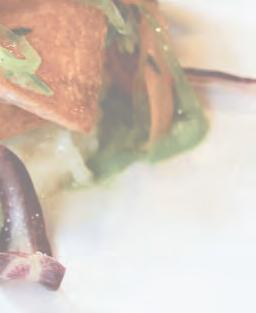


I was 6, and it was a week after Halloween One of my aunts had just sent our family a "care package" from Switzerland and it included, of course, chocolate When I managed to get a piece I very quickly realized that there was a difference a big difference between my Halloween loot and the "real stuff"
Wendy Boys, Cocolico, Vancouver
In 2004, I was invited to l'Ecole du Grand Chocolat in Tain l'Hermitage, France. It was a huge honour and I was incredibly nervous. Stepping off the train in the middle of the night and smelling the chocolate aroma wafting from the factory was the most amazing and comforting smell. The experience at that school cemented my love affair with chocolate and it became the focus of my life's work

Marc Lieberman, Mink Chocolates, Vancouver
The development of product flavors for the Mink line of small batch artisan chocolate bars was a long and arduous process I got a tremendous amount of support and encouragement from my wife along the way. To honor her, I named her favorite after her My most memorable moment came when she read the website description of that, for the first time.
Heather Highnett, VinCoco Artisan Chocolates, Victoria
Inspiration from enjoying my first ever piccolo of champagne with chocolate on a road trip from Germany to Paris. I kept thinking of that moment while staying up three days straight making and packaging my first ever Vin Coco Christmas chocolates!
Kim Shaw, Chocolate Tofino, Tofino
Love and chocolate have always been a perfect pairing. This summer, we had the sweetest proposal in our tiny 250 square foot shop Surrounded by handcrafted chocolates, red roses, and a handwritten proposal in chocolate, she said yes E
38 EAT MAGAZINE JANUARY | FEBRUARY2014
ever yday 10am-12am Breakfast Late Night 1097 Langford Parkway Victoria, BC V9B 0A5 250 920 9397 250 391 7900 .gallopinggoosegrille.com info@gallopinggoosegrille.com witter!
y Comedy Shows
Short Rib & Squash Ramen Bowl

To keep it easy and for best flavour, prepare this soup in stages. Make the broth a day or two ahead so flavours can blend. Layer in the squash, noodles and other ingredients just before serving. Serves 4
Soup Base
3 to 4 lbs beef short ribs
Sea salt and freshly ground black pepper, to taste
3 Tbsp vegetable oil
4 garlic cloves, peeled
2-in piece of ginger, cut into 3 pieces
1 dried chili – something spicy!
2 to 3 Tbsp soy sauce
1 tsp mirin
1 tsp Chinese five spice powder (optional)
2 cups coarsely chopped squash
8 baby bok choy , cut into long thin pieces
1/2 -400g pkg dry instant noodles, cooked or your favourite noodles
Garnish (optional)
4 hard cooked eggs*, cut in half
Wakame
Green onions
Chopped cilantro
Fresh lime wedges
Season short ribs with salt and pepper. Heat oil in a large Dutch oven over medium-high heat. Working in 2 batches, brown meat on all sides. Remove pieces as done to a plate.
Discard most of the oil. Add garlic, ginger and chili. Stir for 1 min., then pour in ½ cup (125 ml) water. Scrape up and stir in any brown bits from pan bottom. Return meat (plus any juices) to pan. Add enough cold water to cover the meat. Bring to a boil, skimming any foam. Then cover and place in preheated 350F oven. Cook, stirring occasionally, until very tender, 21/2 to 3 hours.
Strain and save liquid. Discard garlic, ginger and chilies. Set meat aside. Stir in soy sauce, mirin and five-spice powder (if using). Shred meat or keep it on the bone, then stir back into broth. If making ahead, refrigerate. When broth is cold, the fat will solidify, making it easy to scrape off.
Reheat broth and meat. Add squash and simmer until tender, 10 min. Add bok choy and simmer until wilted.
To serve, divide cooked noodles between 4 large bowls. Ladle soup overtop, evenly dividing the ribs, squash and bok choy. Top with eggs, wakame, togarashi, green onions, cilantro or lime wedges. Serve with your favourite hot sauce.
*7 minute rule: want an egg where the yolk stays bright and sunny and just set? Carefully submerge eggs in boiling water (one at time please), then reduce heat and gently simmer or 7 minutes. Drain, then place in a bowl of ice water to stop the cooking. Let cool, then peel.
entered into EAT’s 15th Anniversary Great Sandwich Contest Giveaway

with your favourite local restaurant sandwich and you’ll be
EATcontest@gmail.com

the best sandwich in your city and tell us what that sandwich is? Email us at
the beauty of a great sandwich—it can be just about anything. Tell which eatery makes
sandwich? Is it a classic BLT or perhaps something more inventive or even crazy? That’s
two. Imagine a world without sandwiches? We can’t either. What’s your favourite
As part of EAT’s ongoing 15th Anniversary celebration we are giving away a lunch for
EAT’s Great Sandwich Contest Giveaway
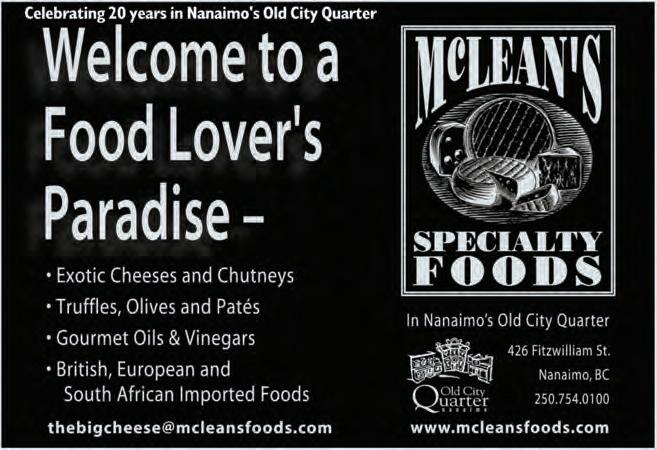
39 www.eatmagazine.ca JANUARY | FEBRARY2014 Feed your passion. Taste success! viu.ca/culinary Upcoming wine and culture eld school in Italy. For more information visit viu.ca/educationabroad 93-12-3320 Researching your options? Come spend a day in our kitchen. Contact: debbie.shore@viu.ca
Culinary Arts: Baking & Pastry Arts
< >









Cookware | Bakeware | Dinnerware | Accessories LeCreuset.ca facebook.com/LeCreusetCanada UNCOMPROMISED PERFORMANCE FOR HOME COOKS AND CHEFS ALIKE SINCE 1925






























































































































































 BY KIRSTEN TYLER
BY KIRSTEN TYLER








































 BY JOSEPH BLAKE
BY JOSEPH BLAKE






































 left: Chef Joodprasong Saimeenoi holding a plate of Chicken Mango Cashew. right: Sweet and Sour Chicken Cashew.
left: Chef Joodprasong Saimeenoi holding a plate of Chicken Mango Cashew. right: Sweet and Sour Chicken Cashew.
























































































 By Michelle Bouffard and Michaela Morris
By Michelle Bouffard and Michaela Morris


























































